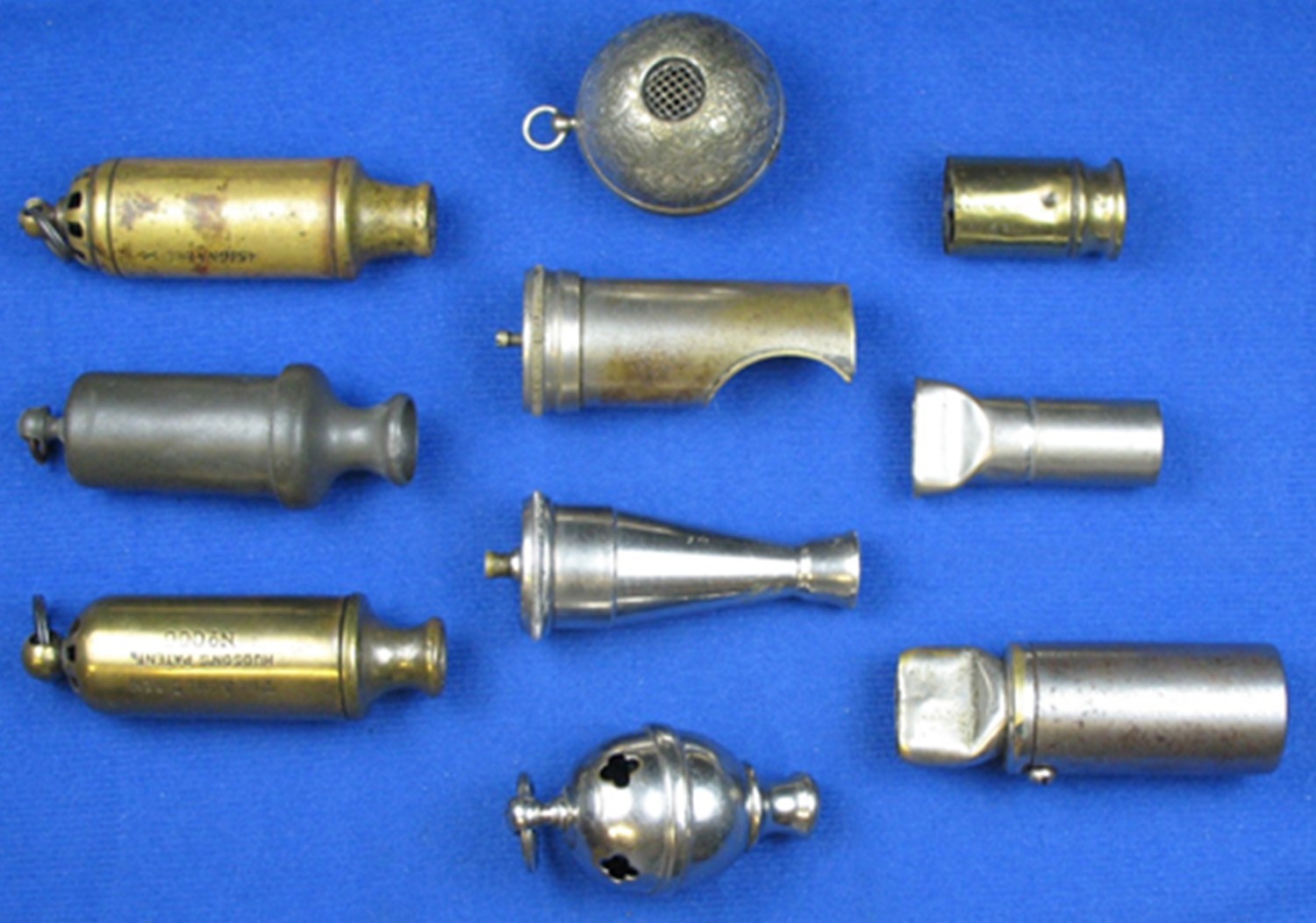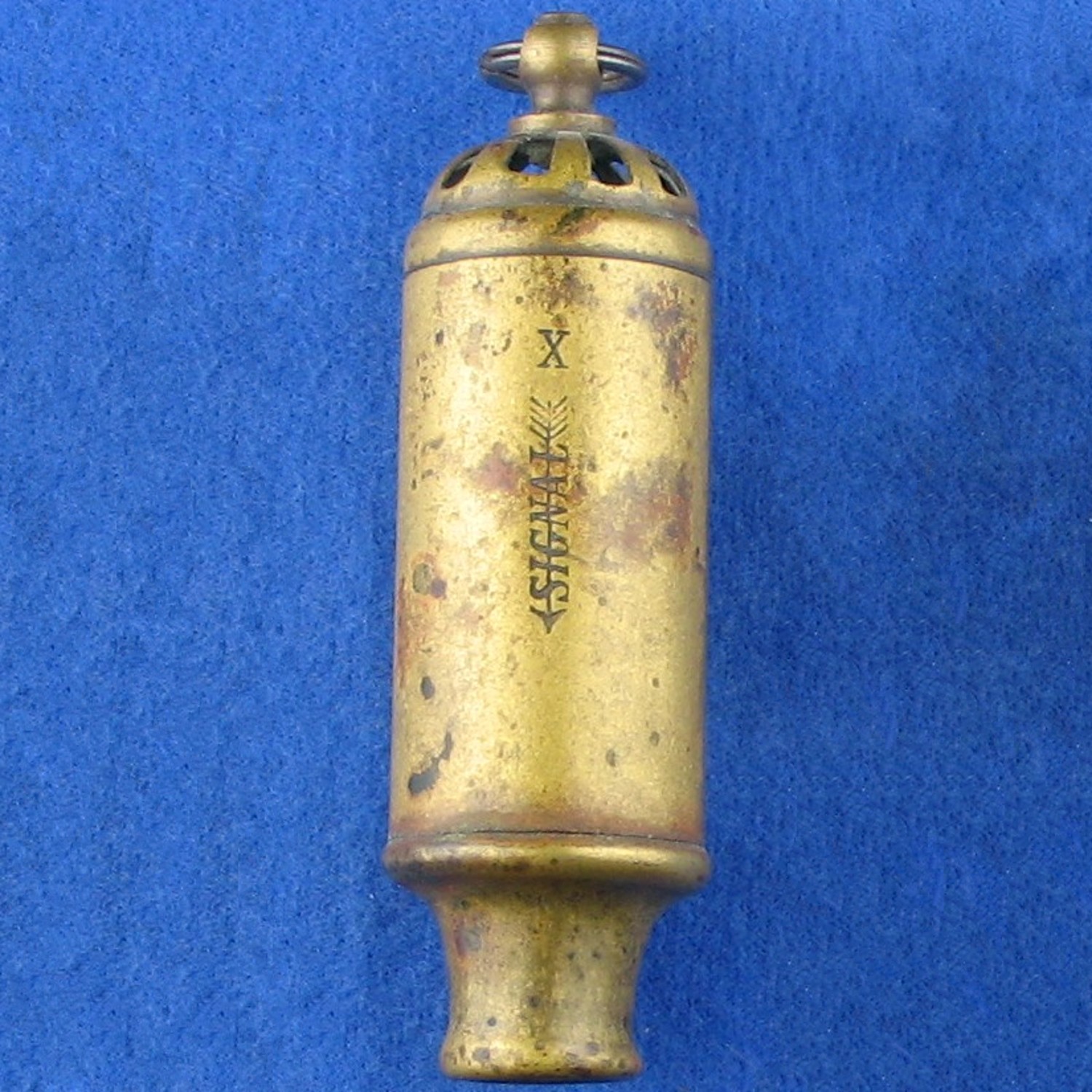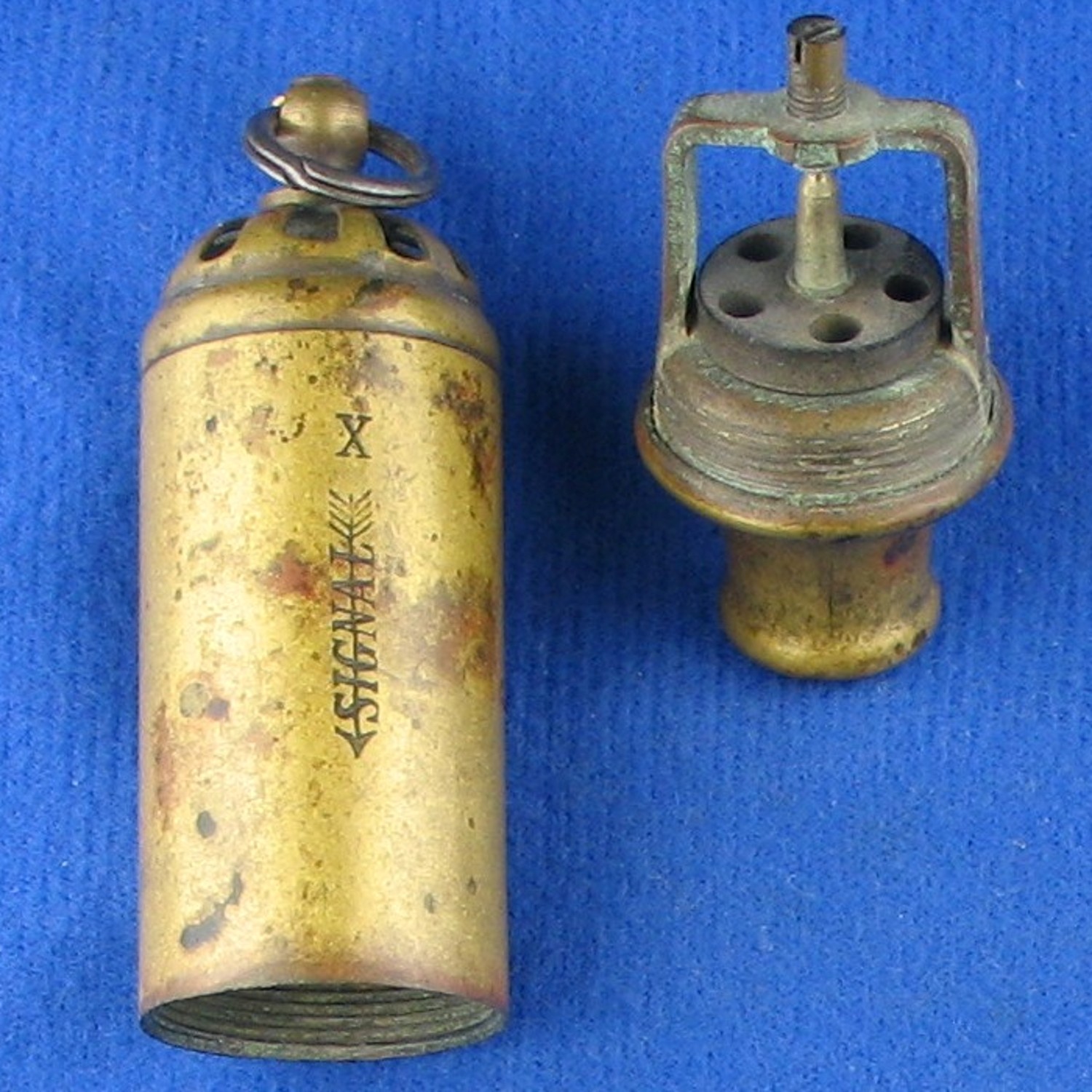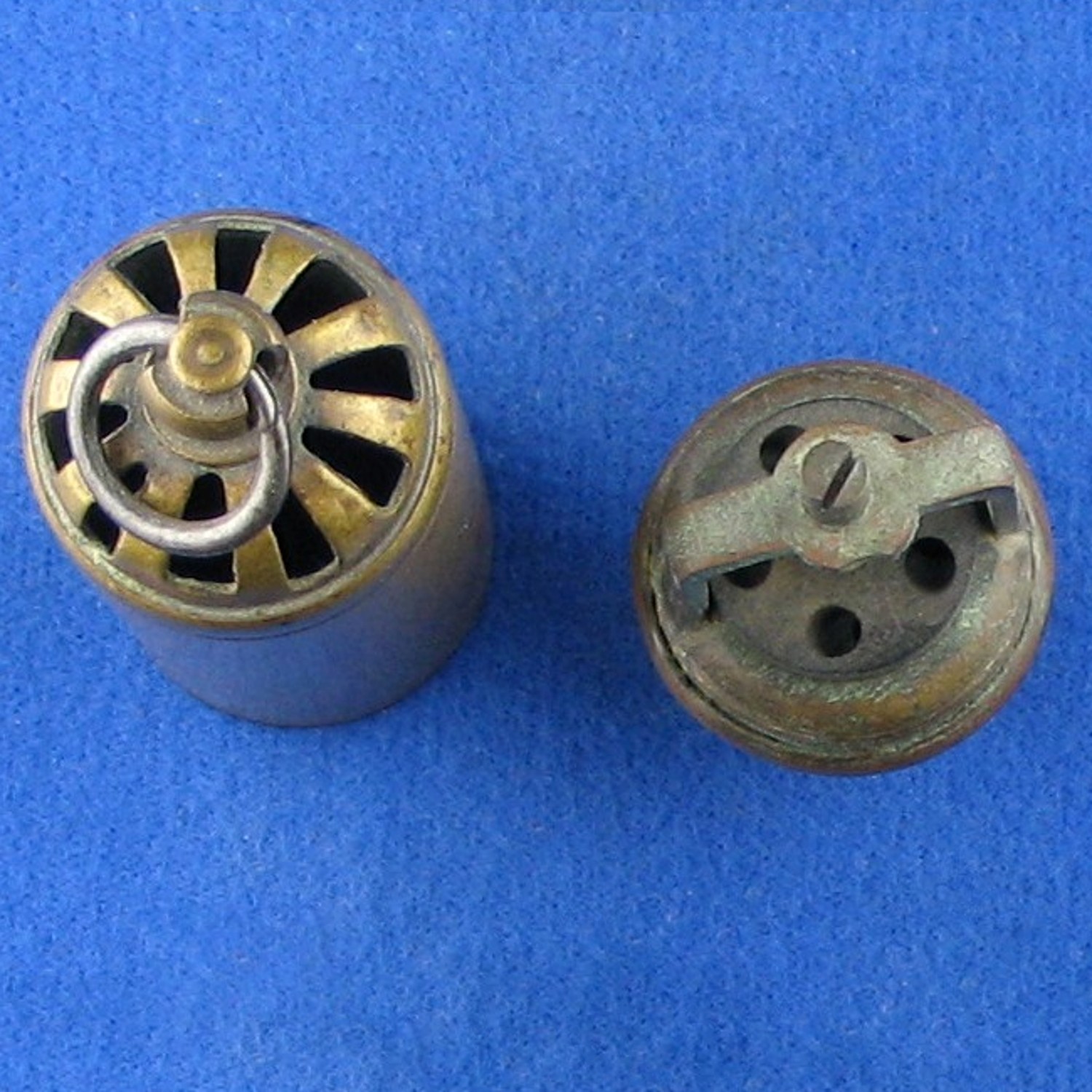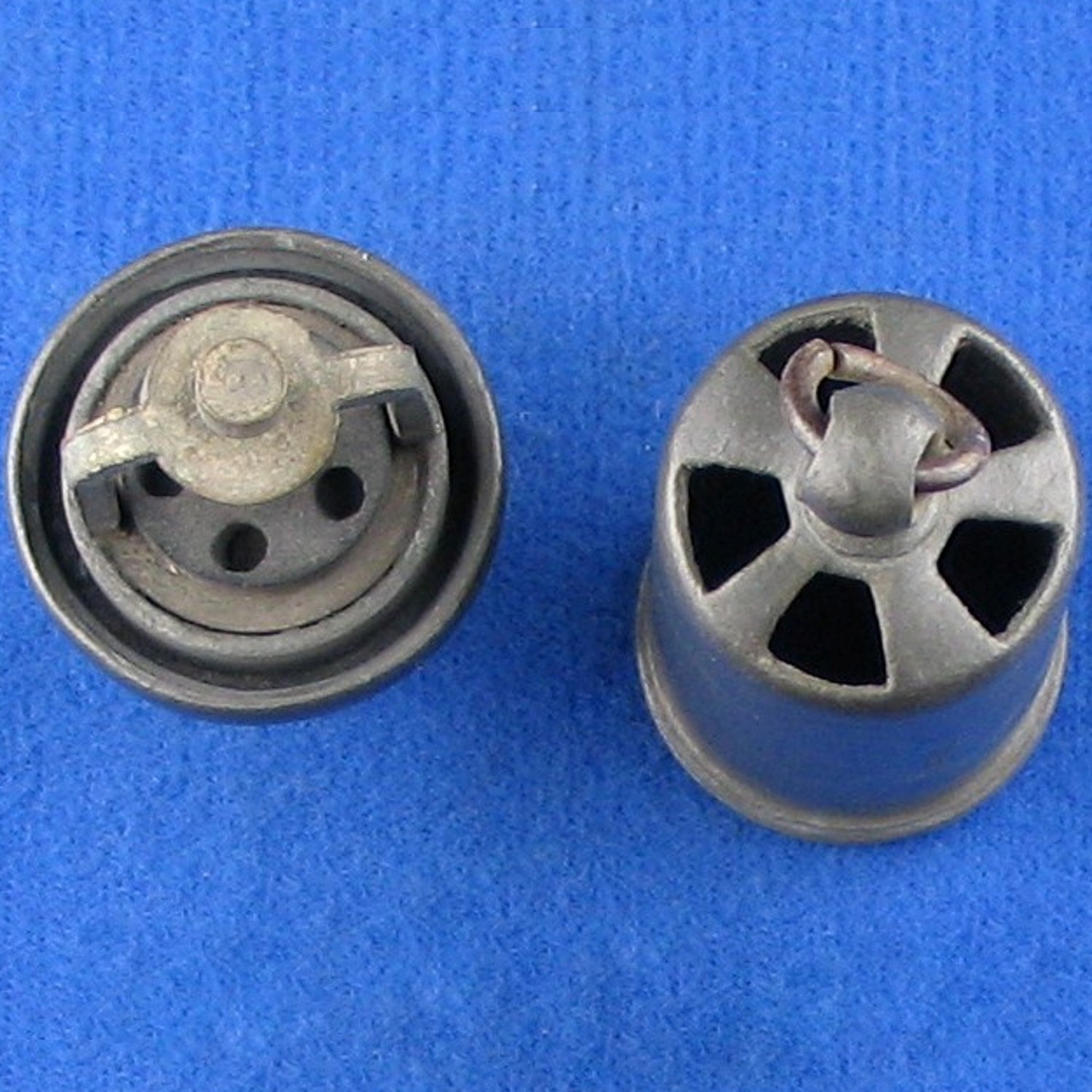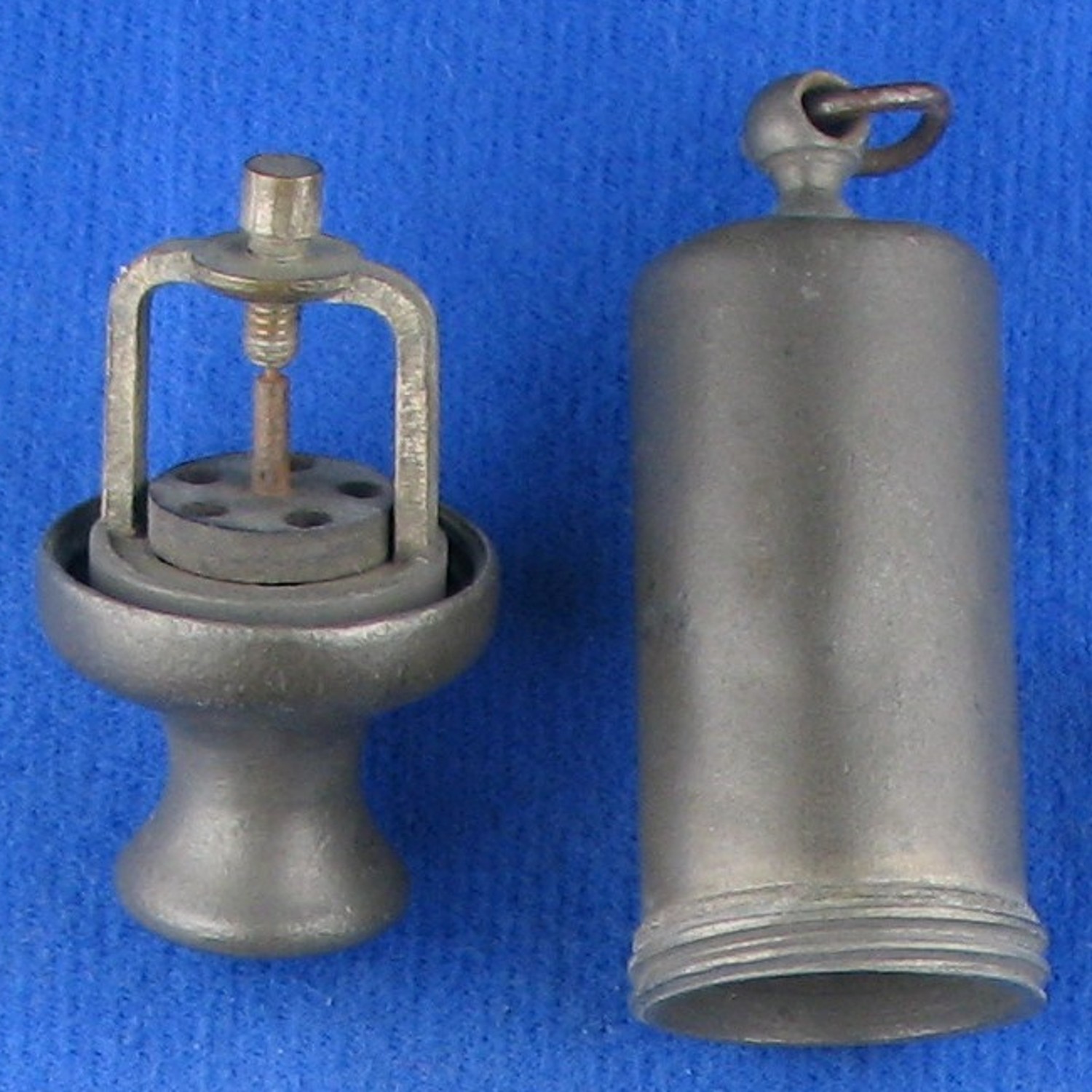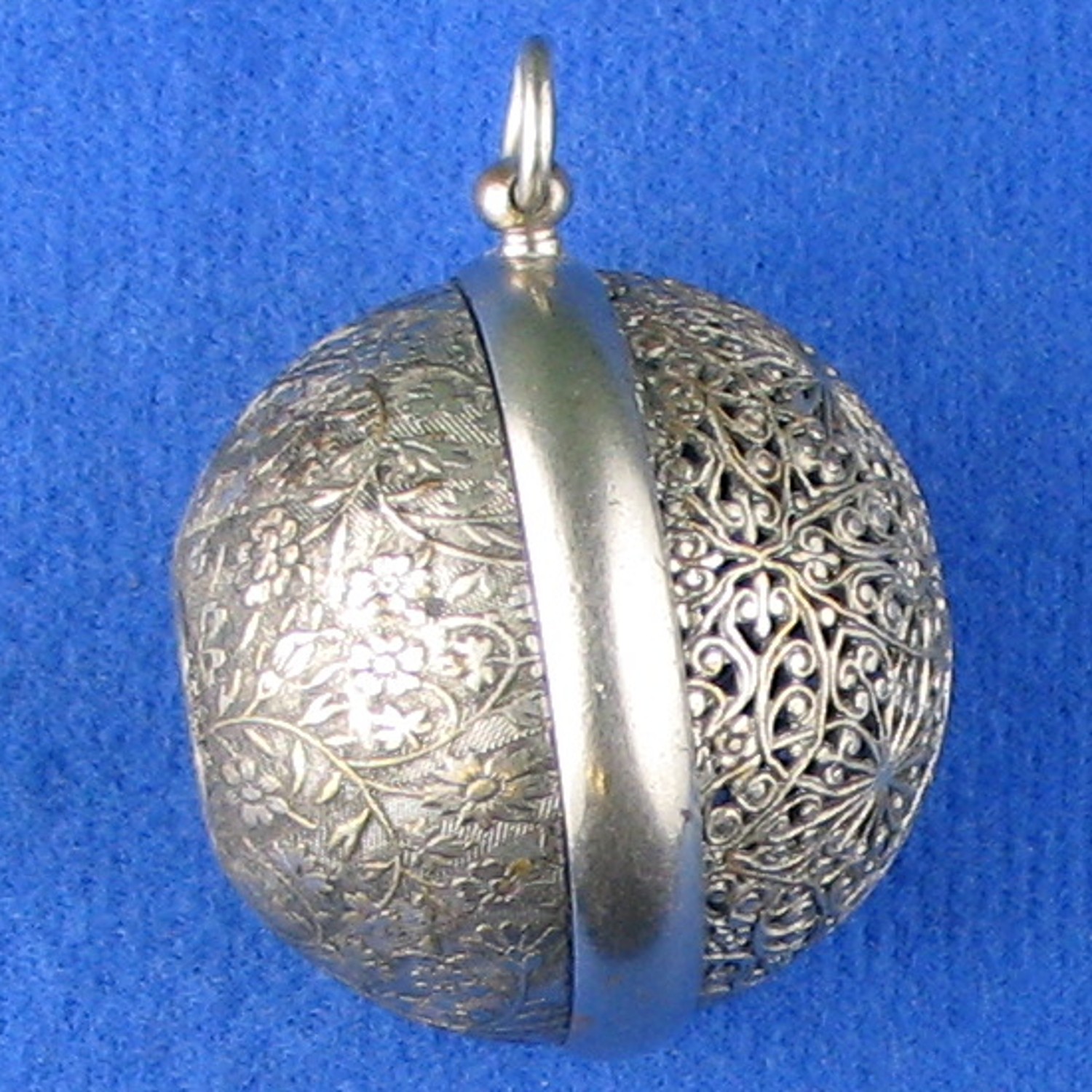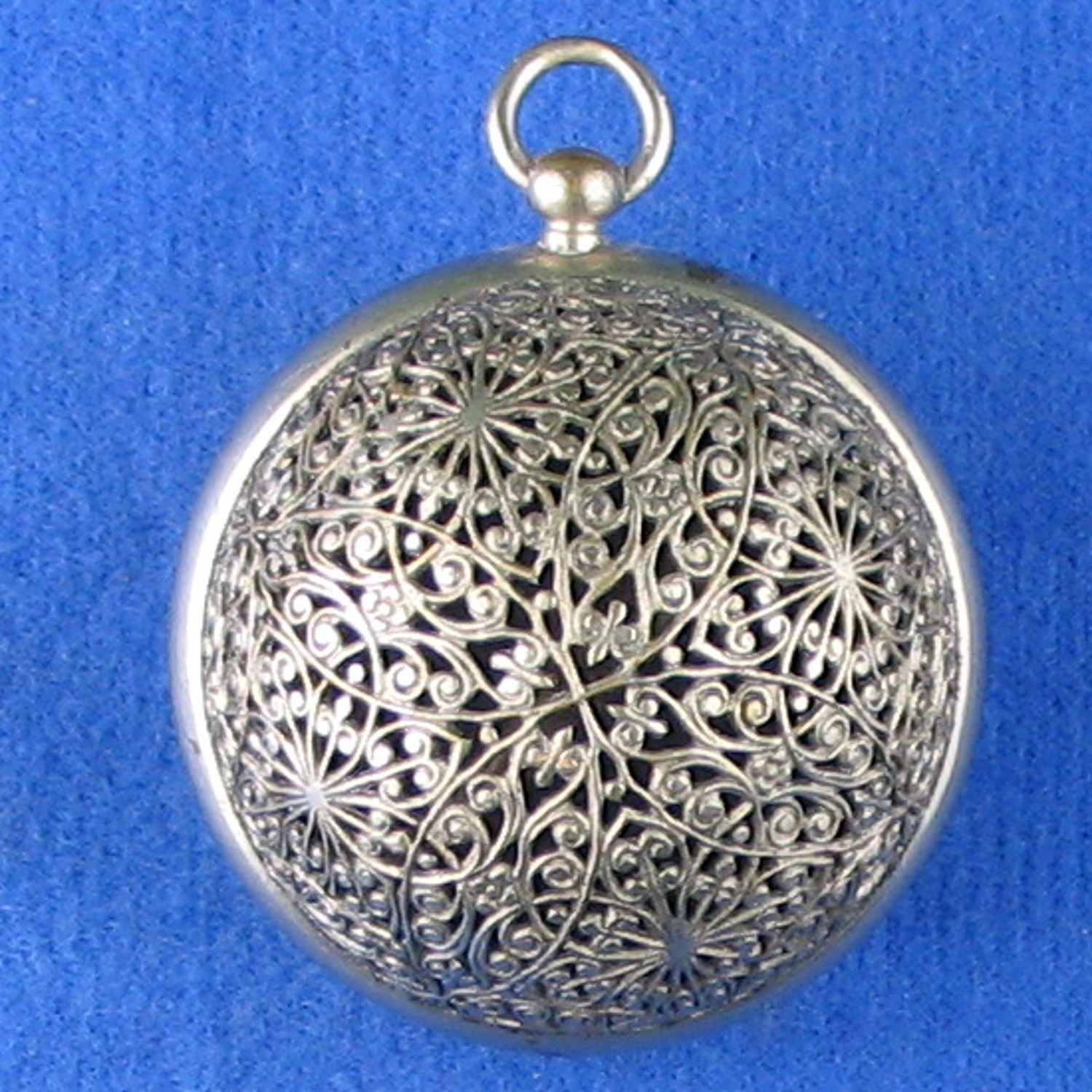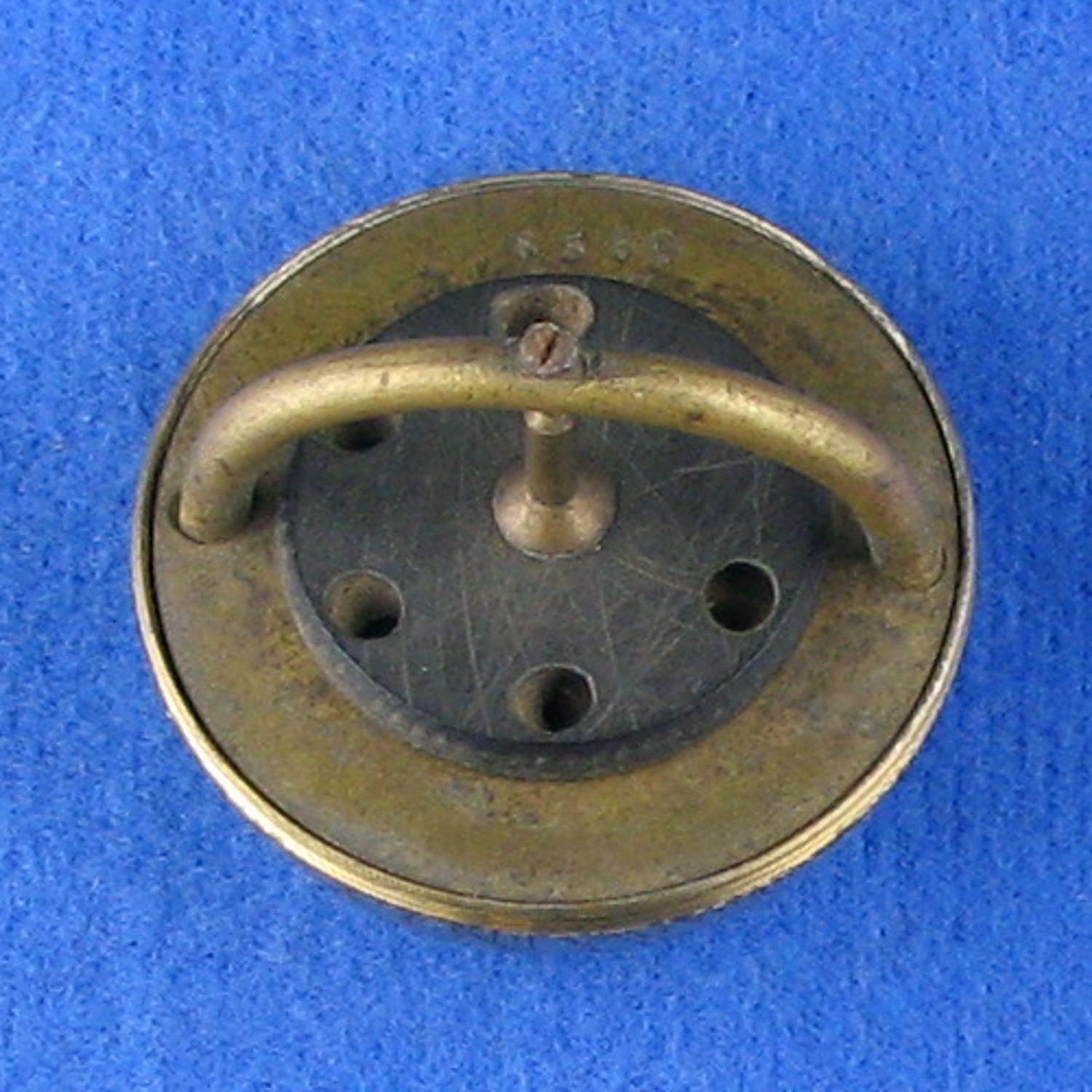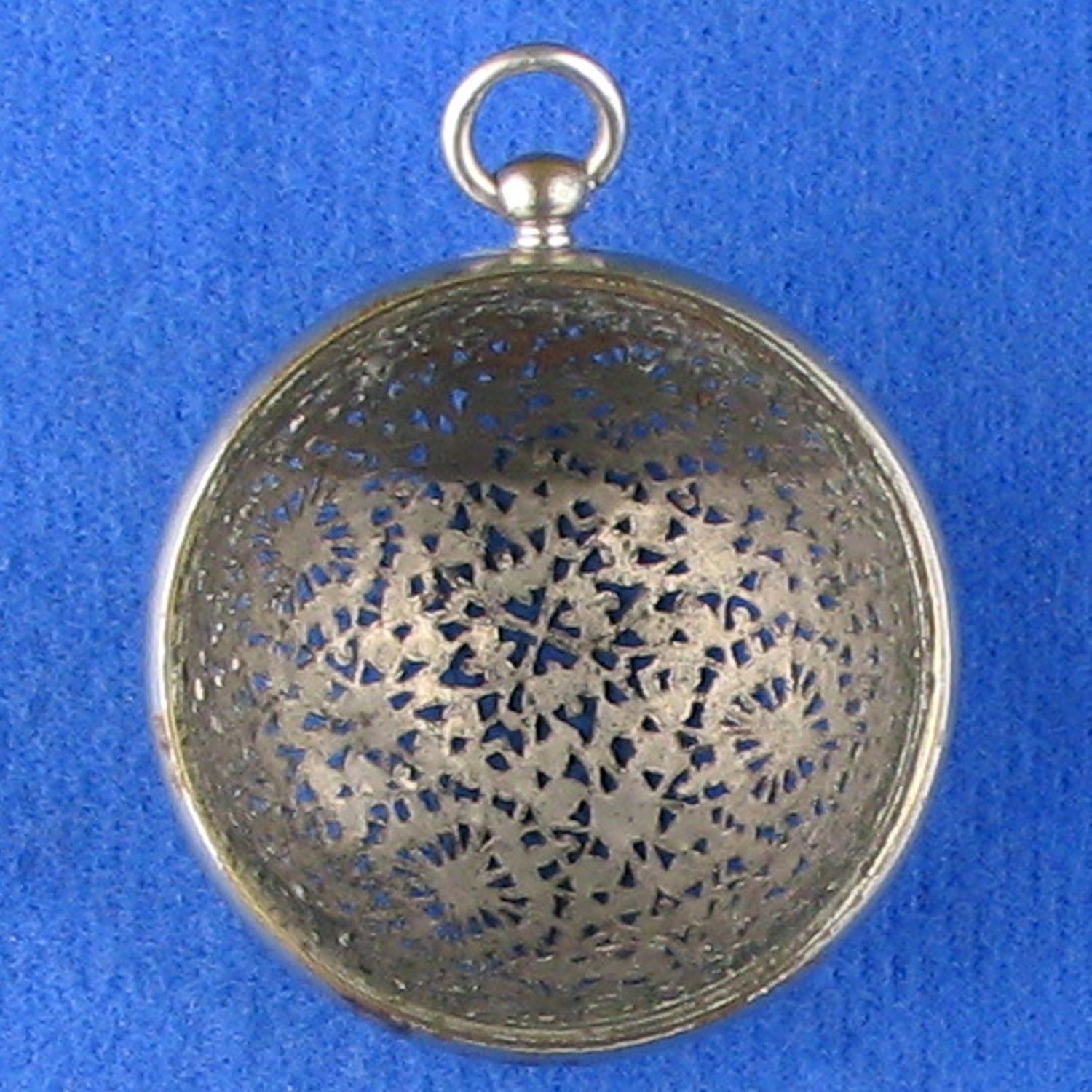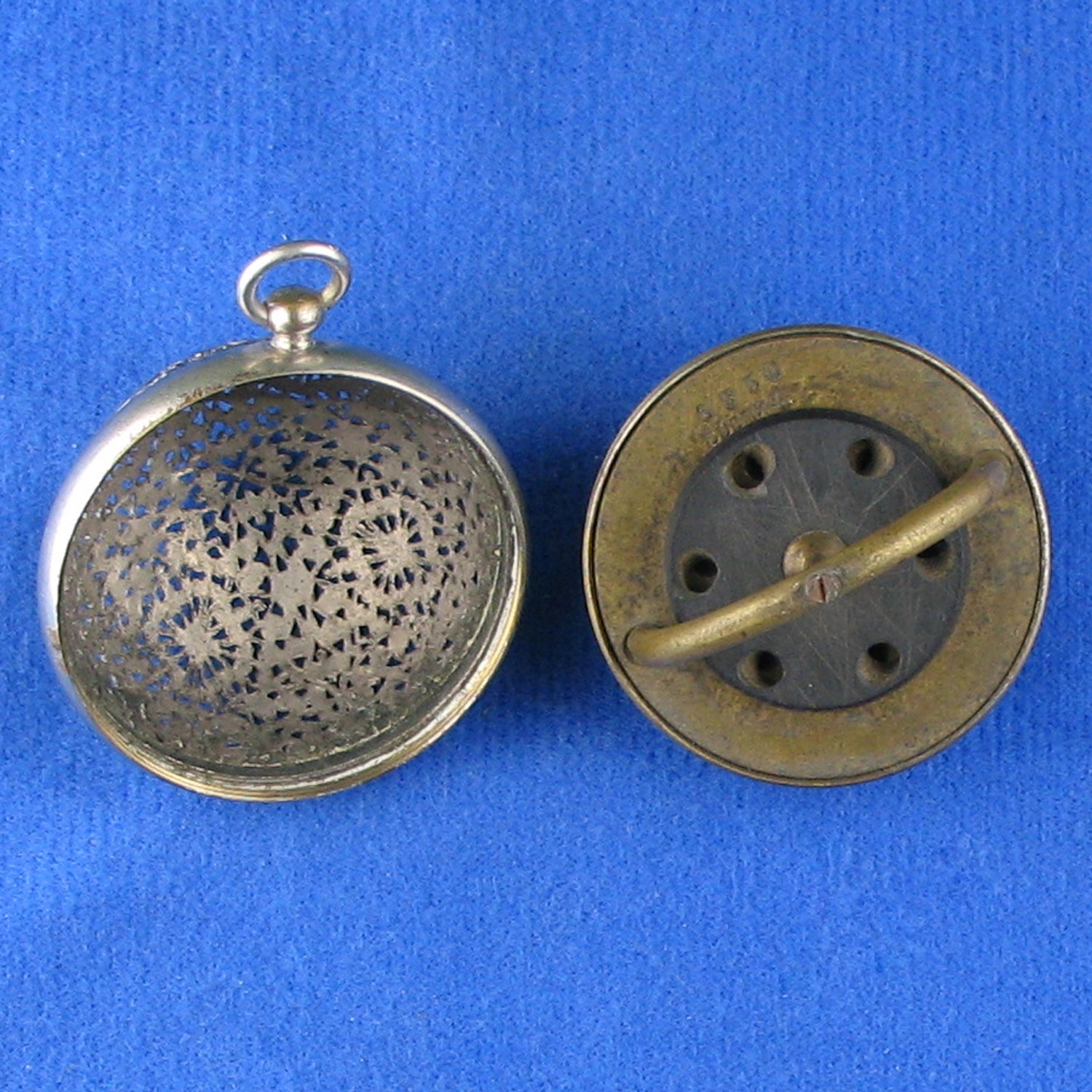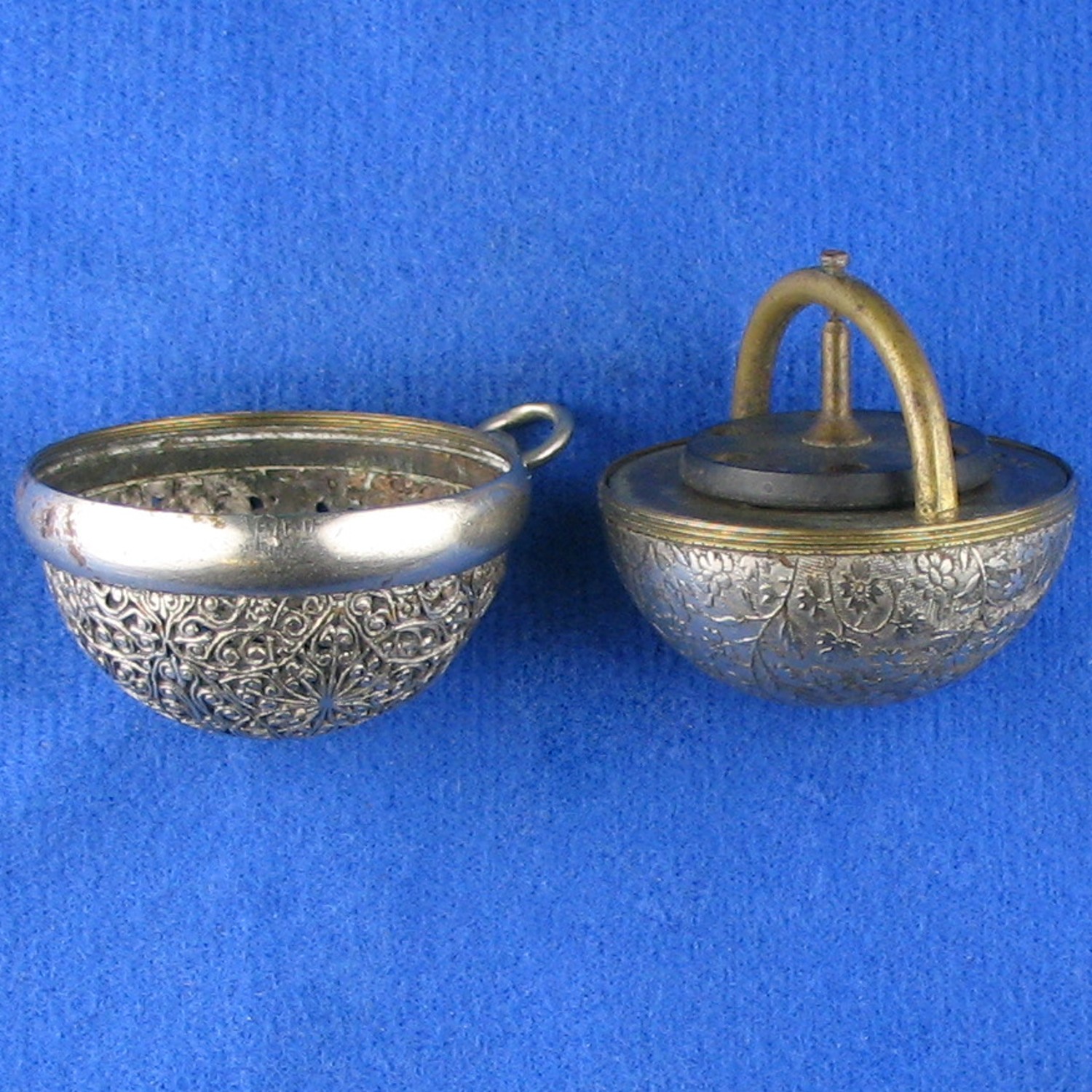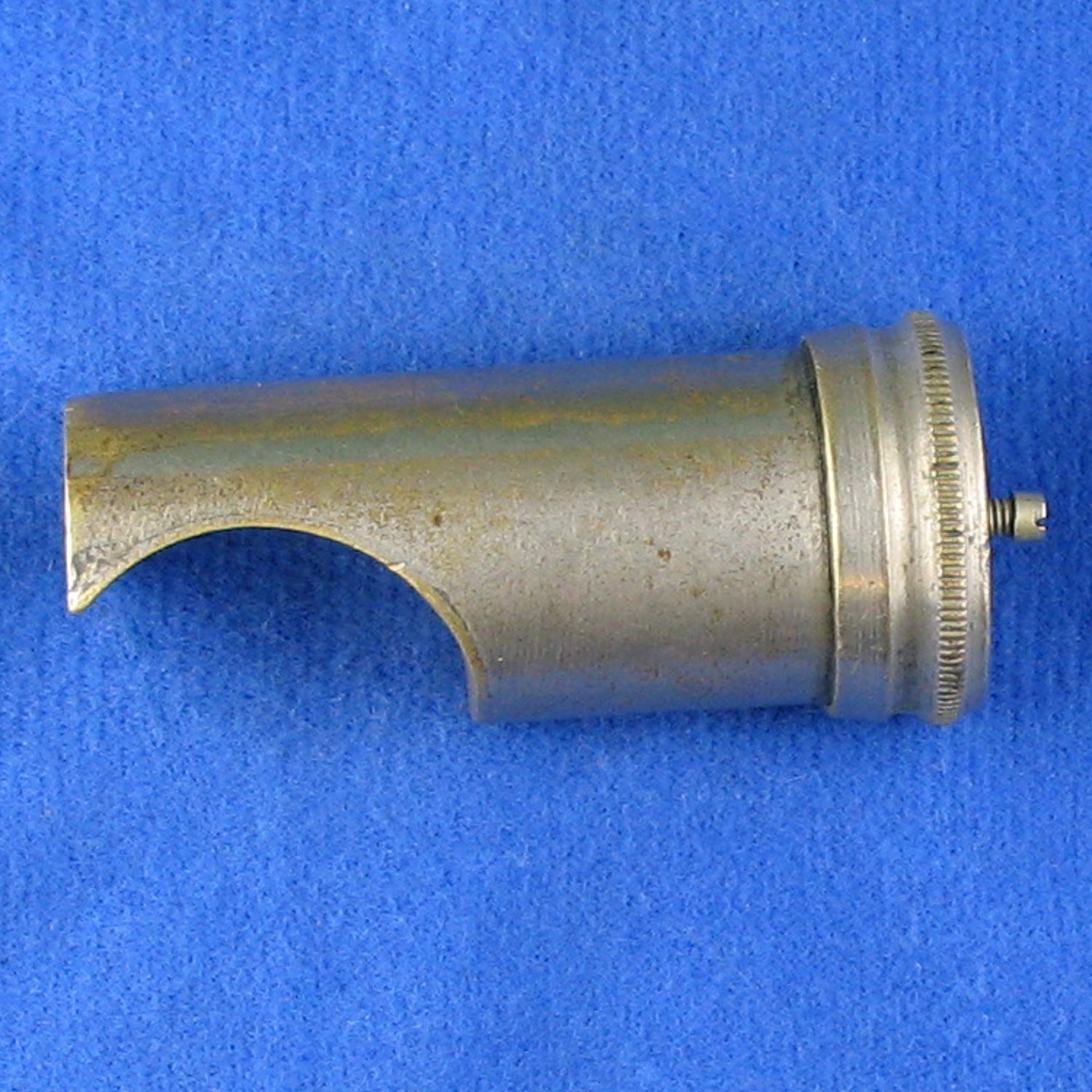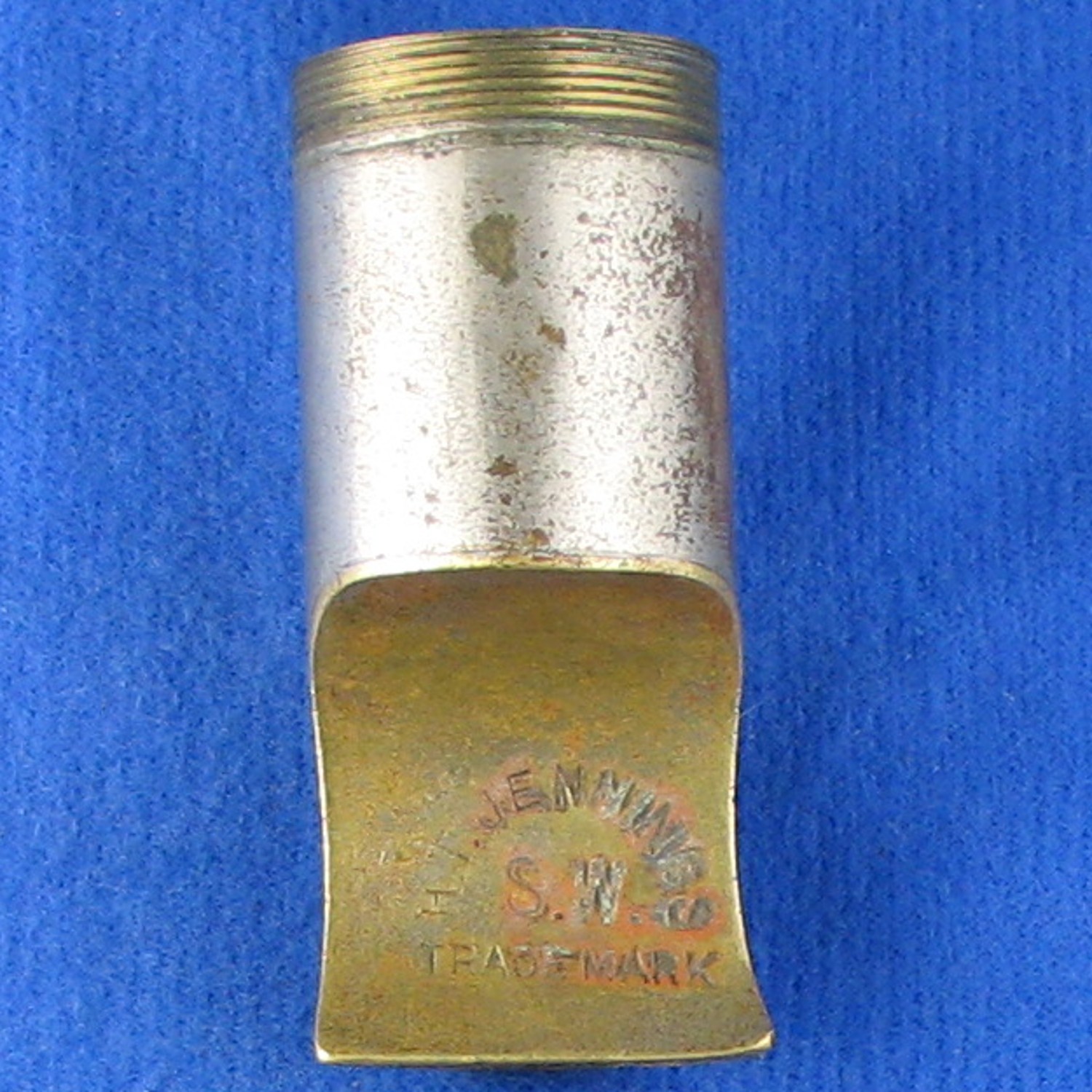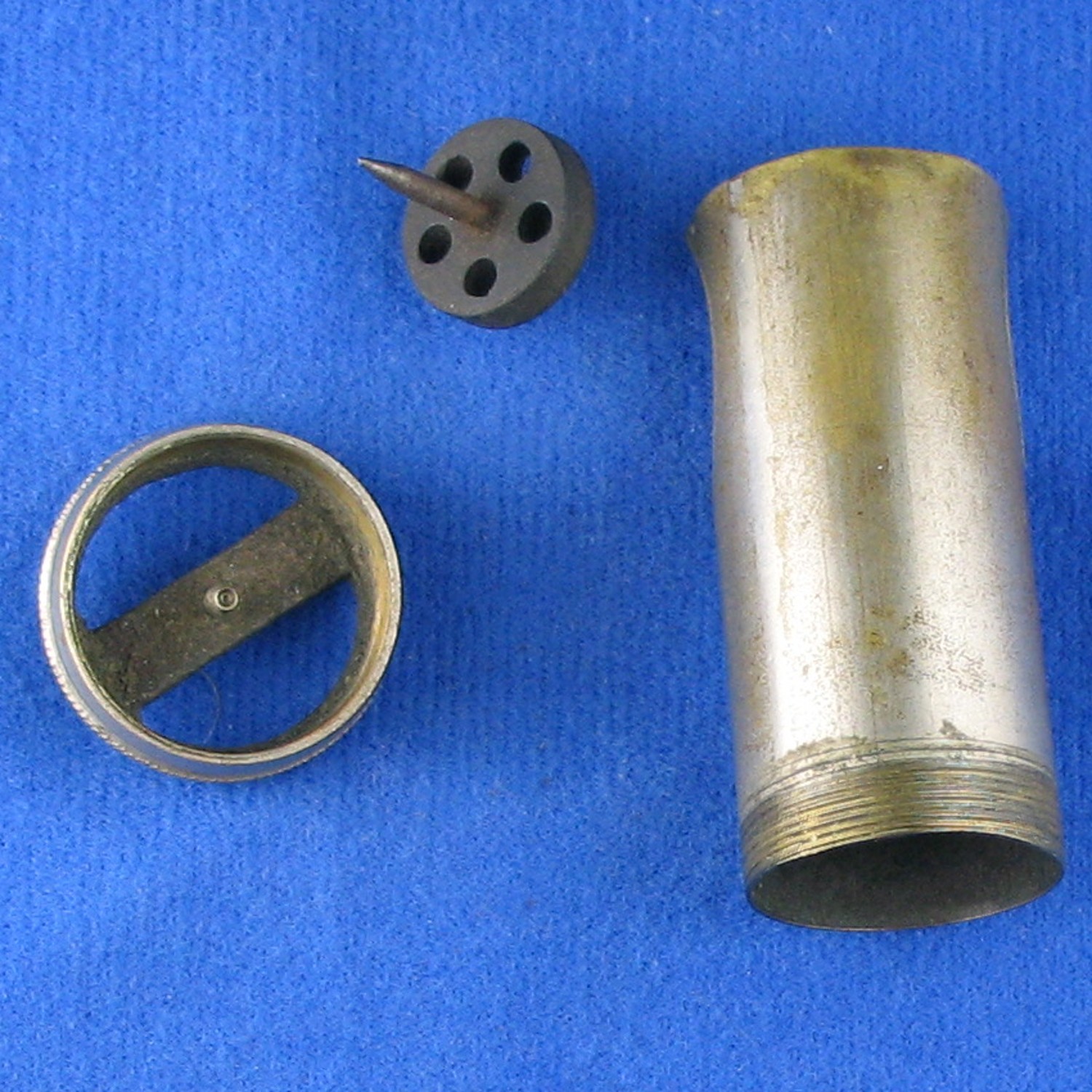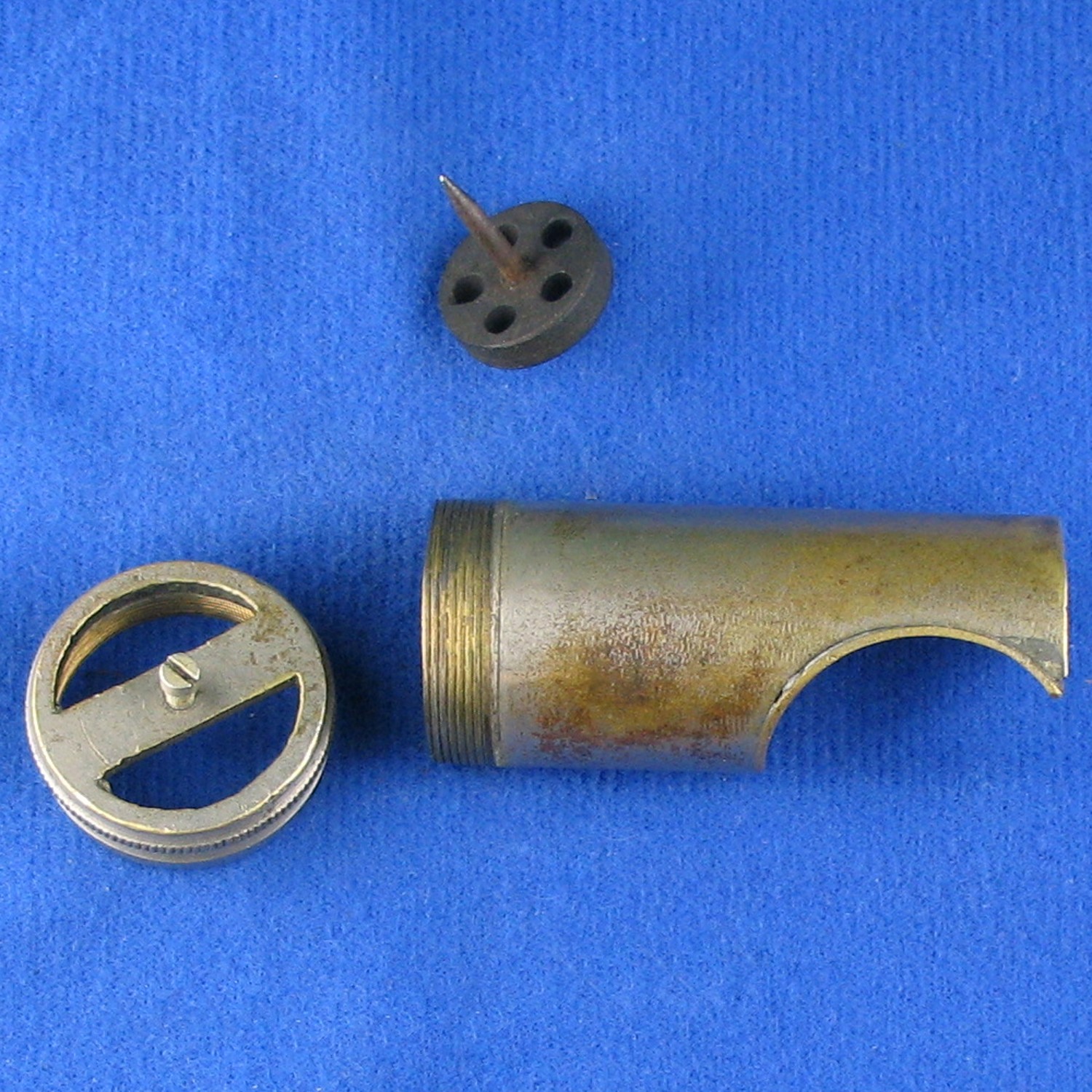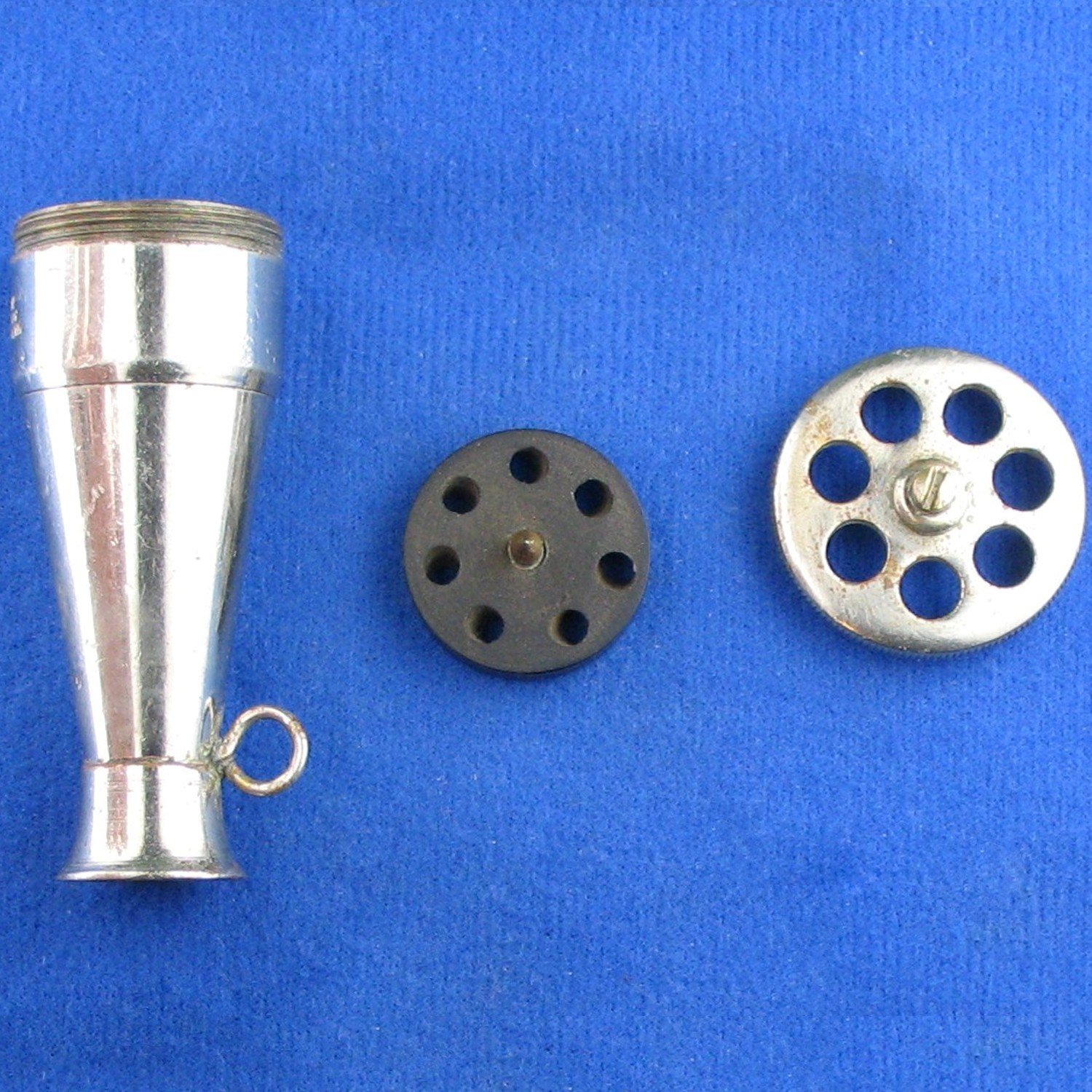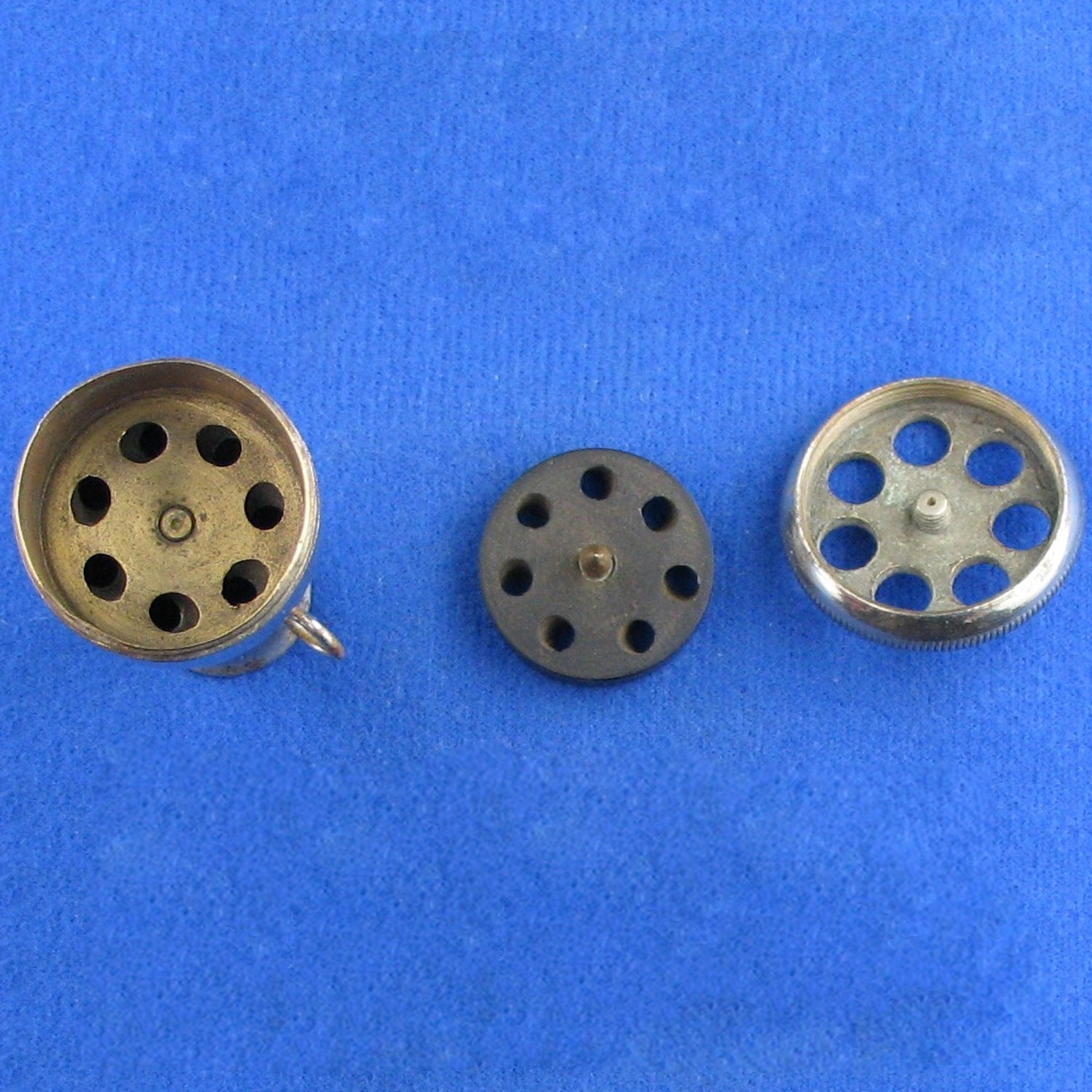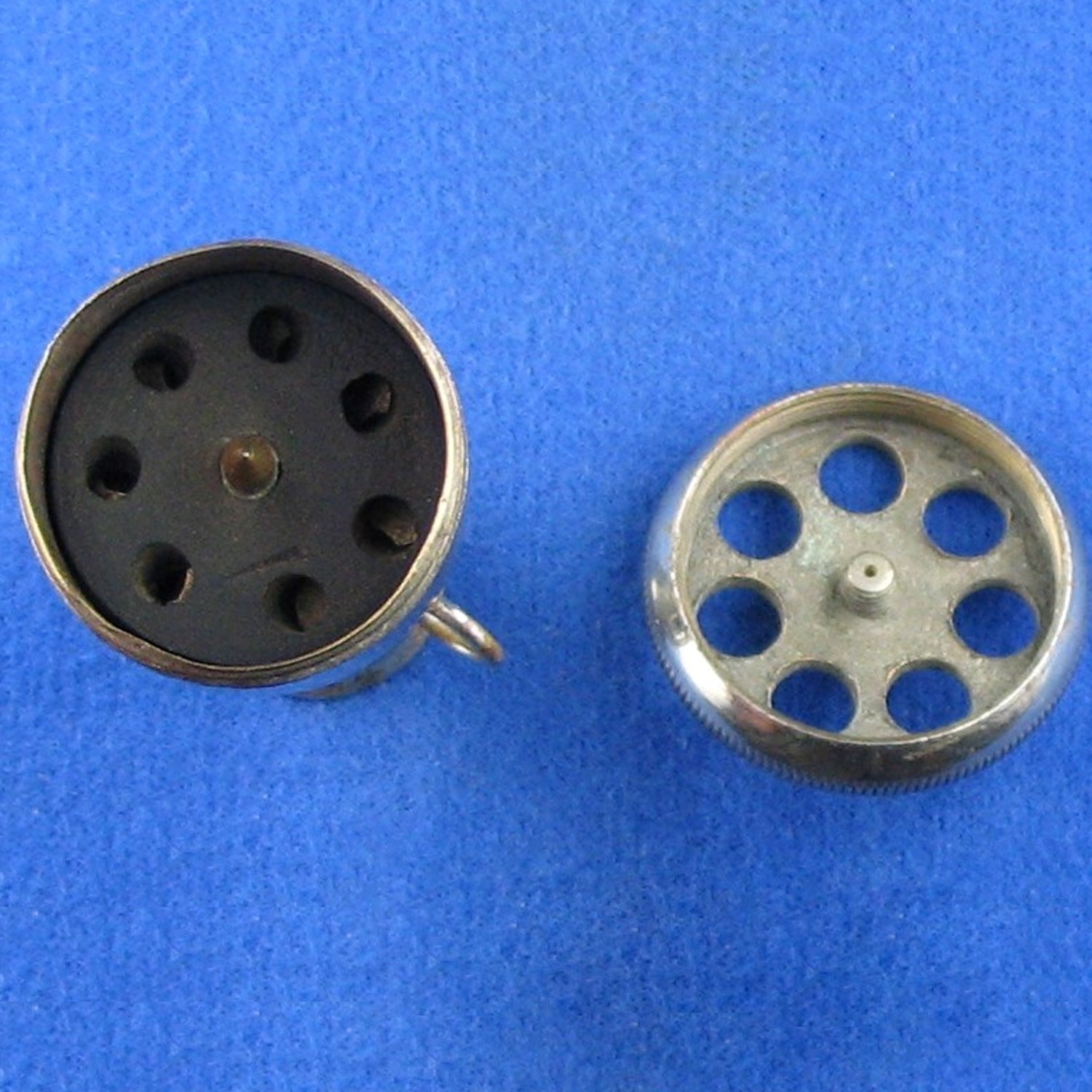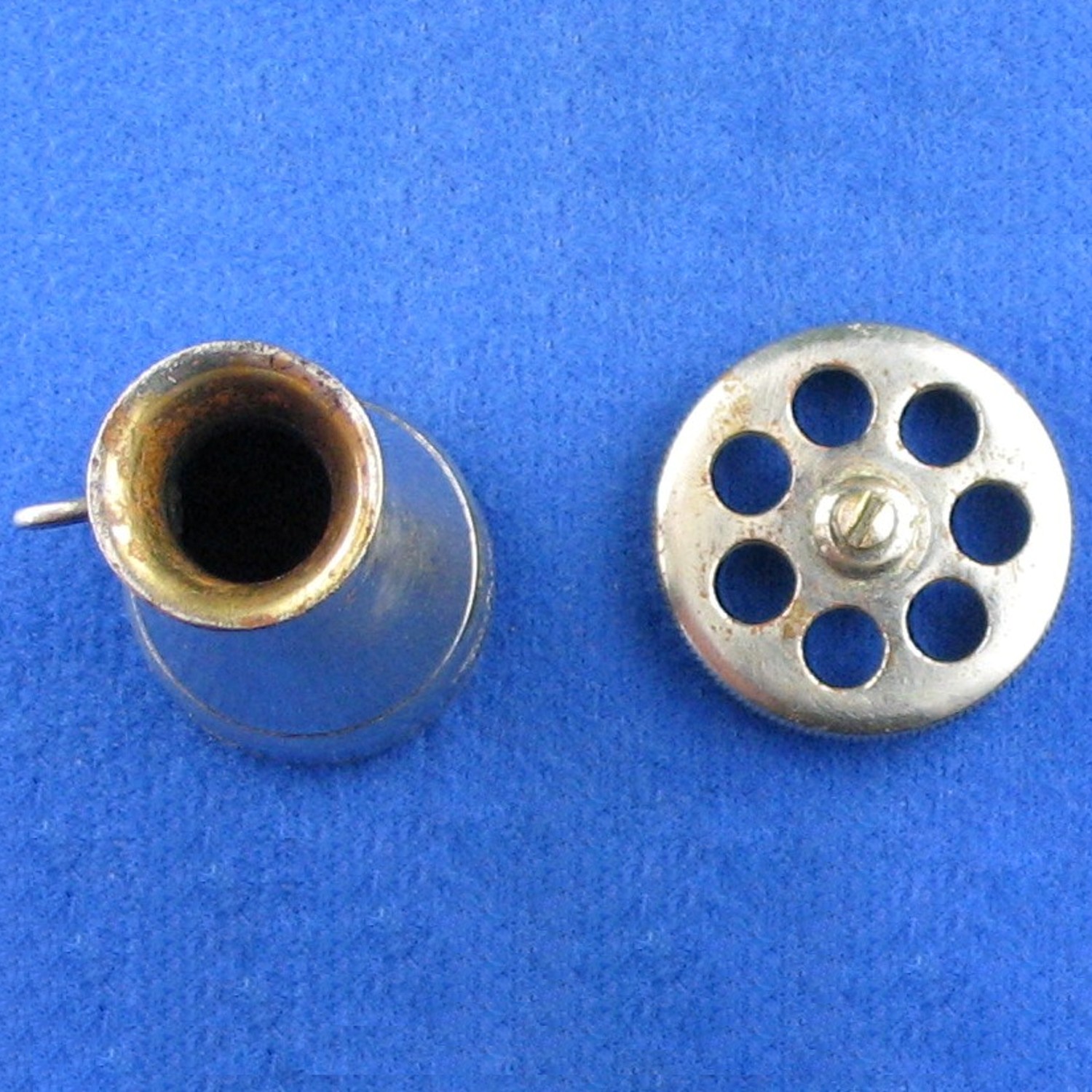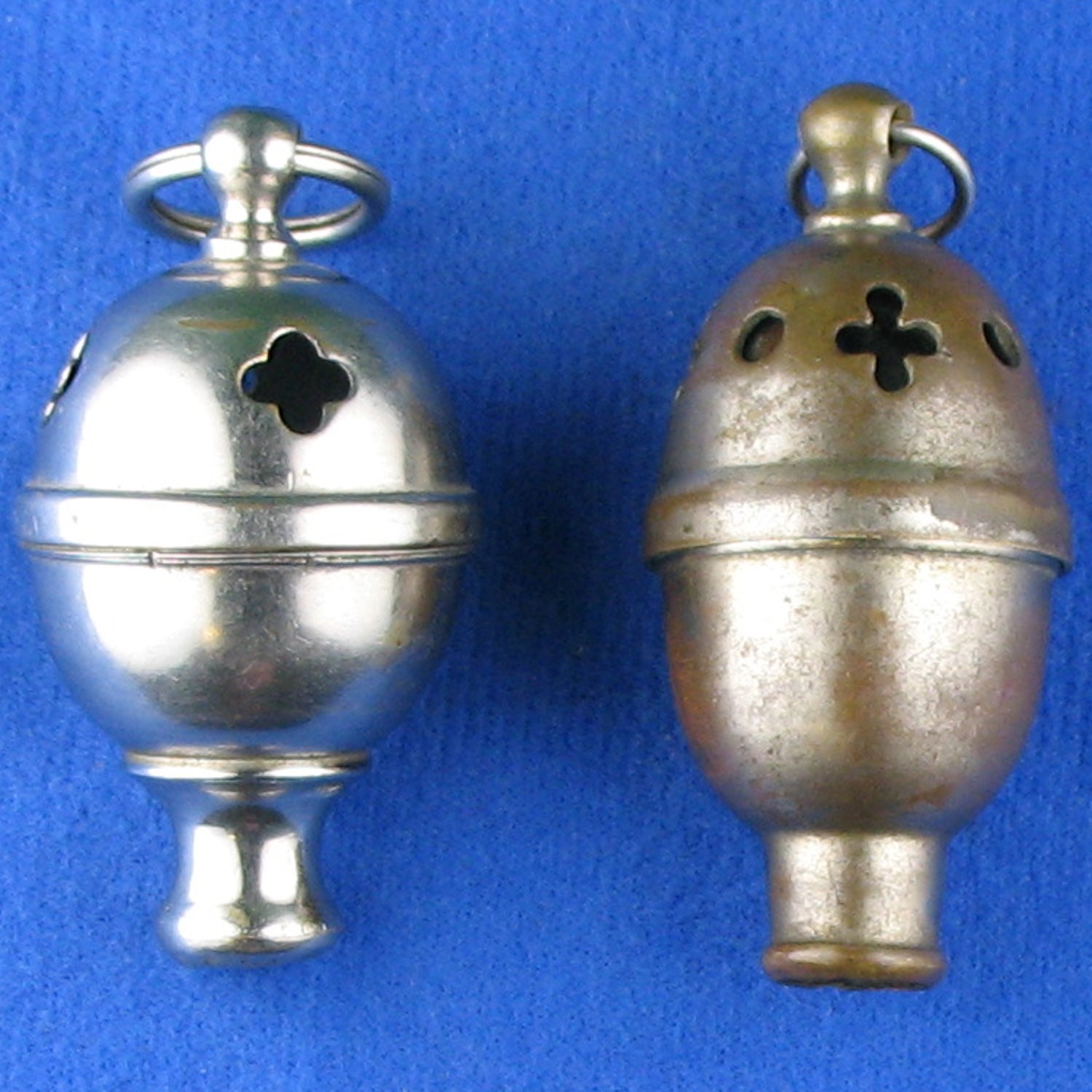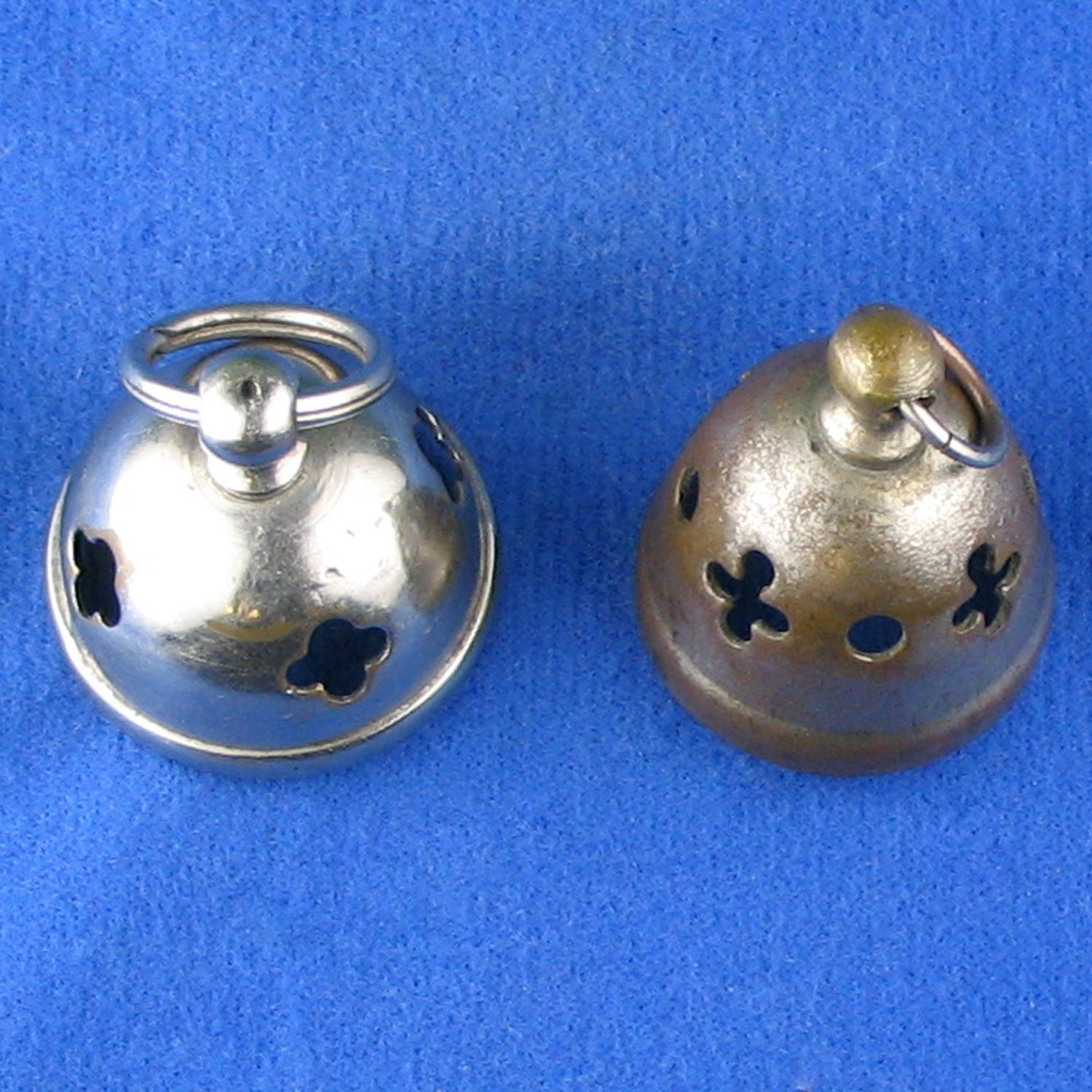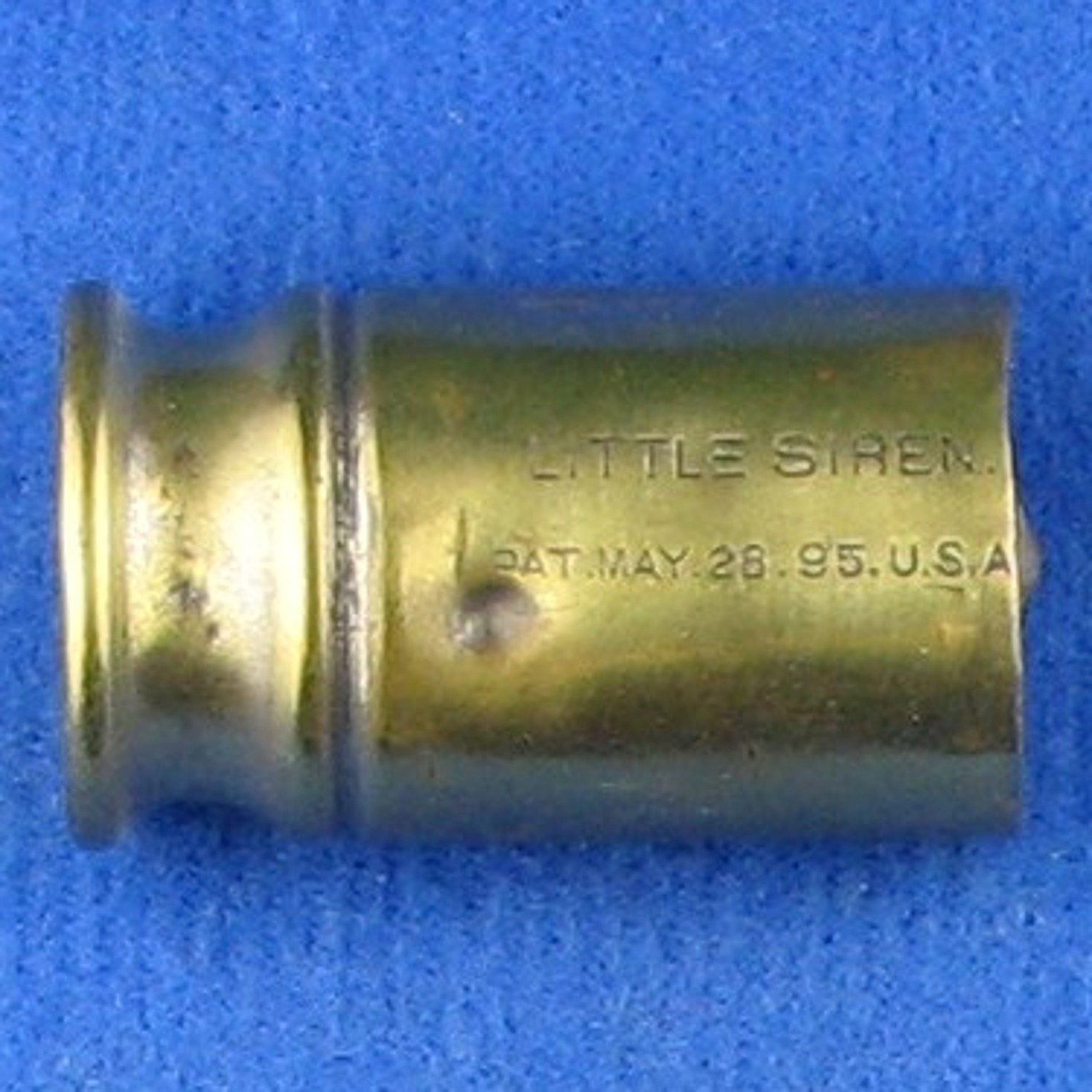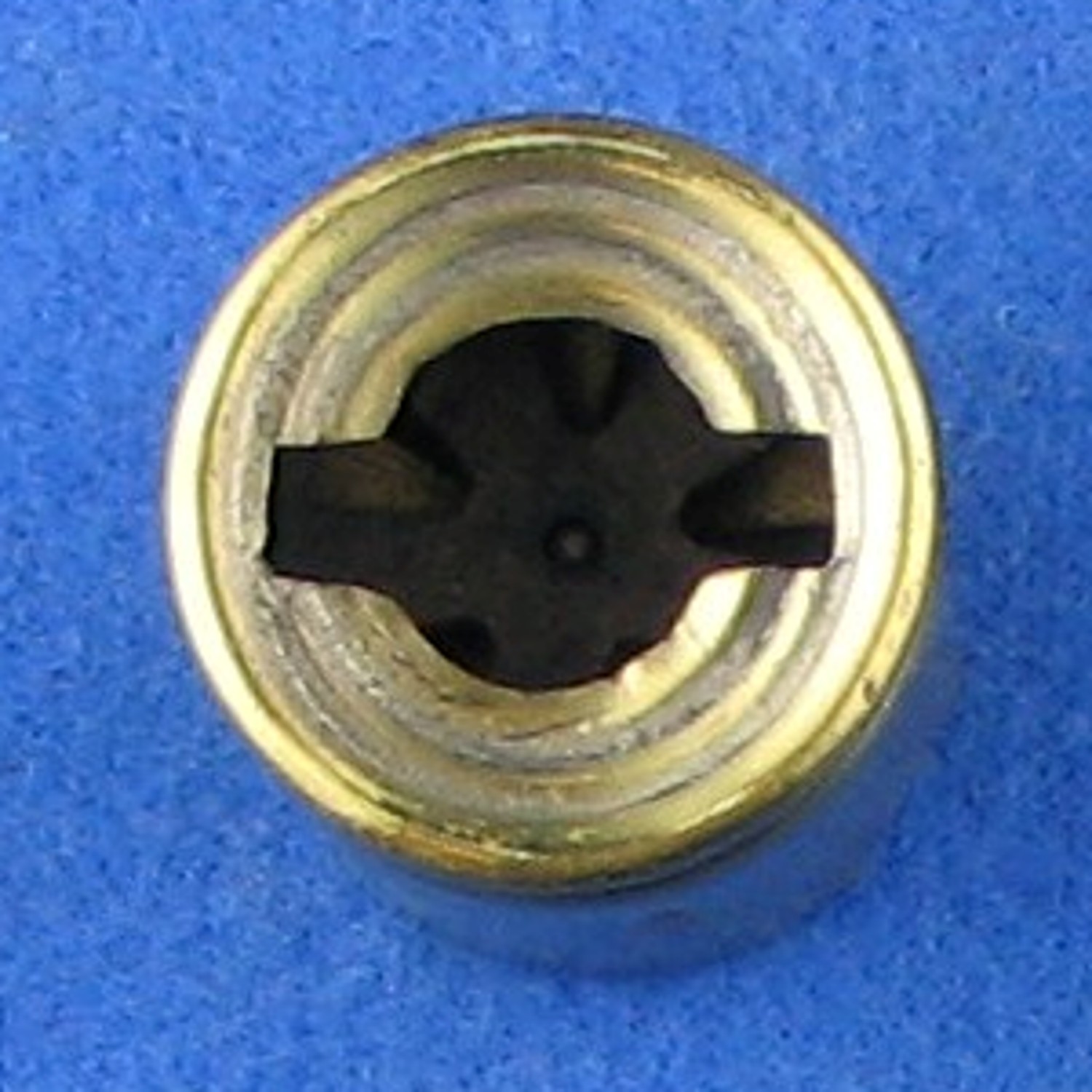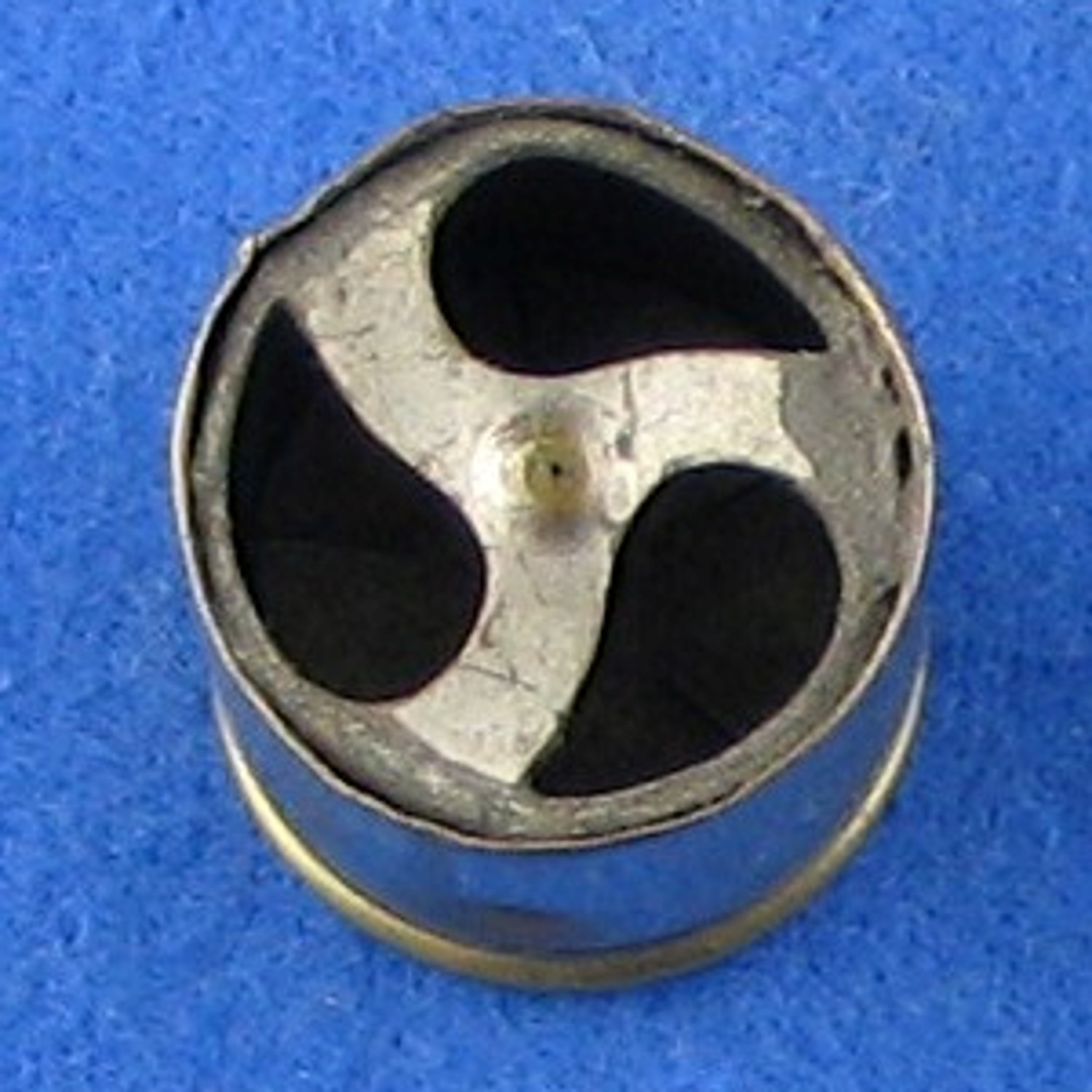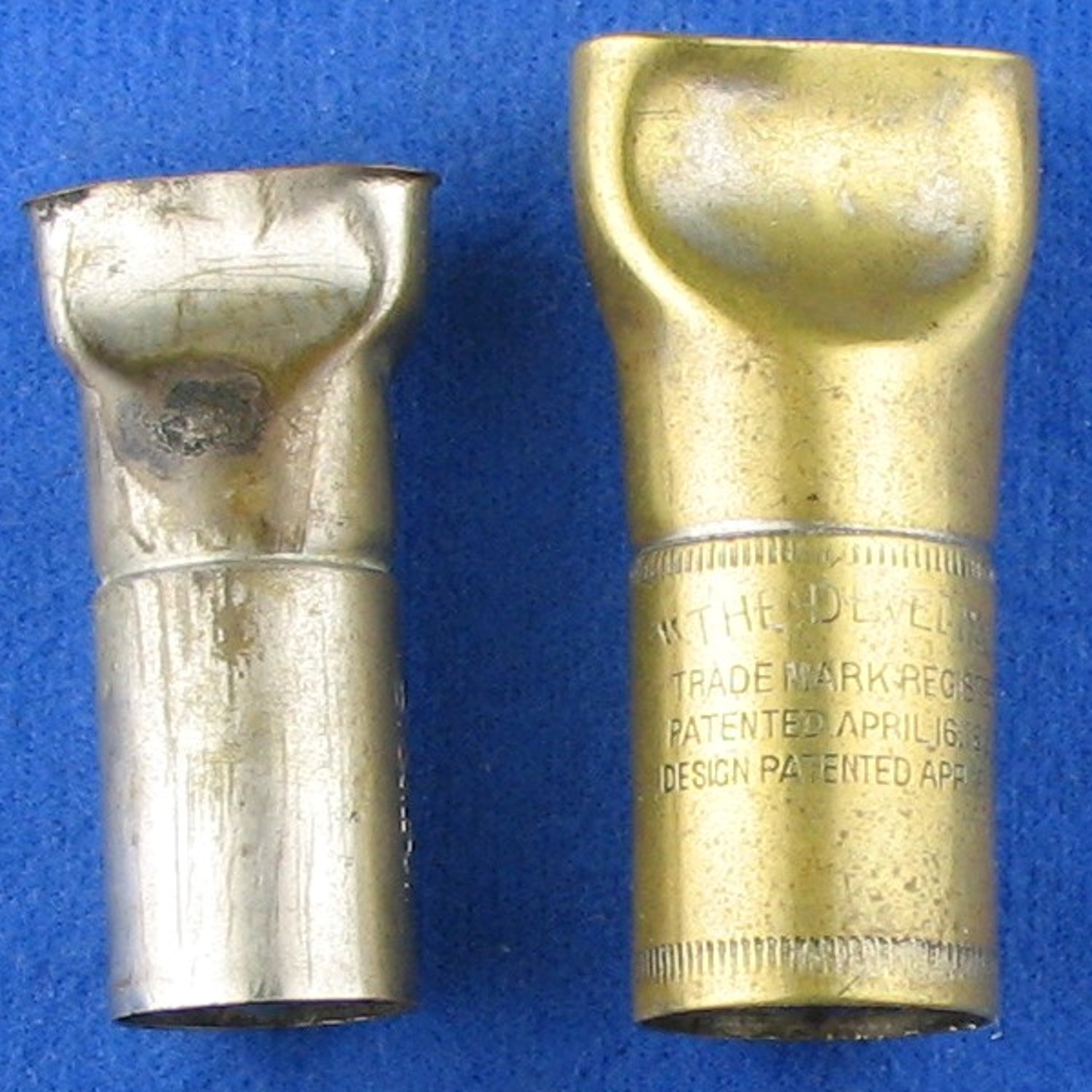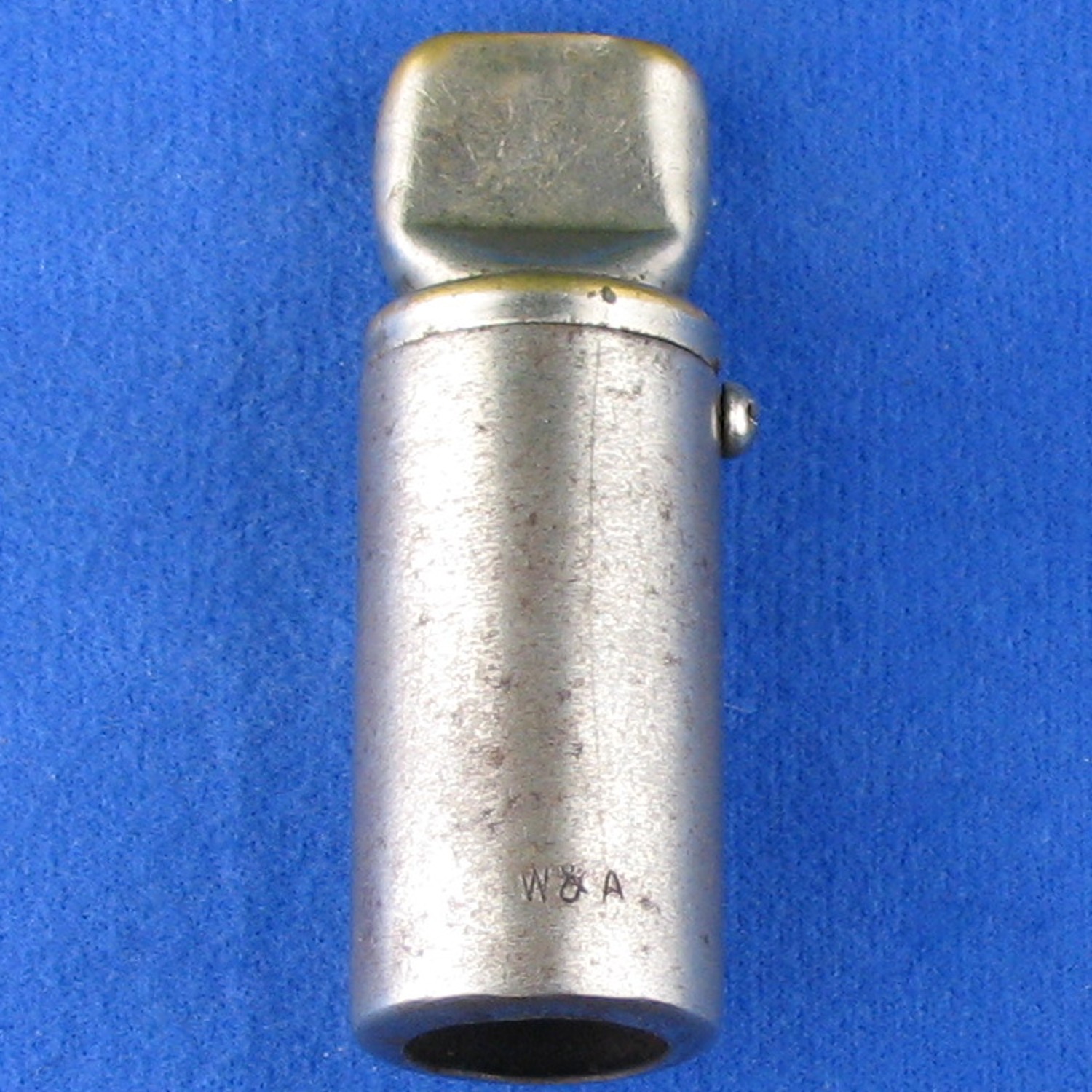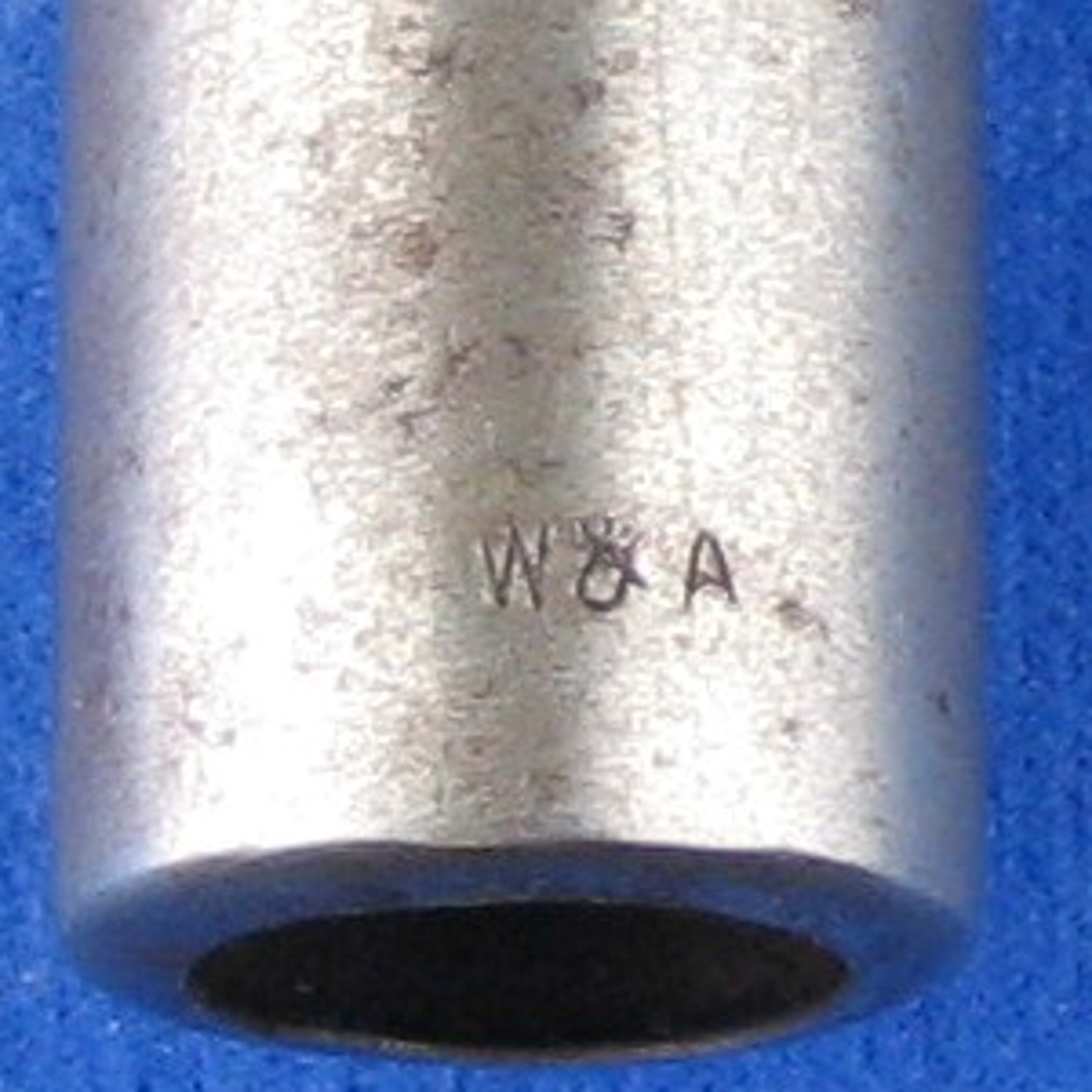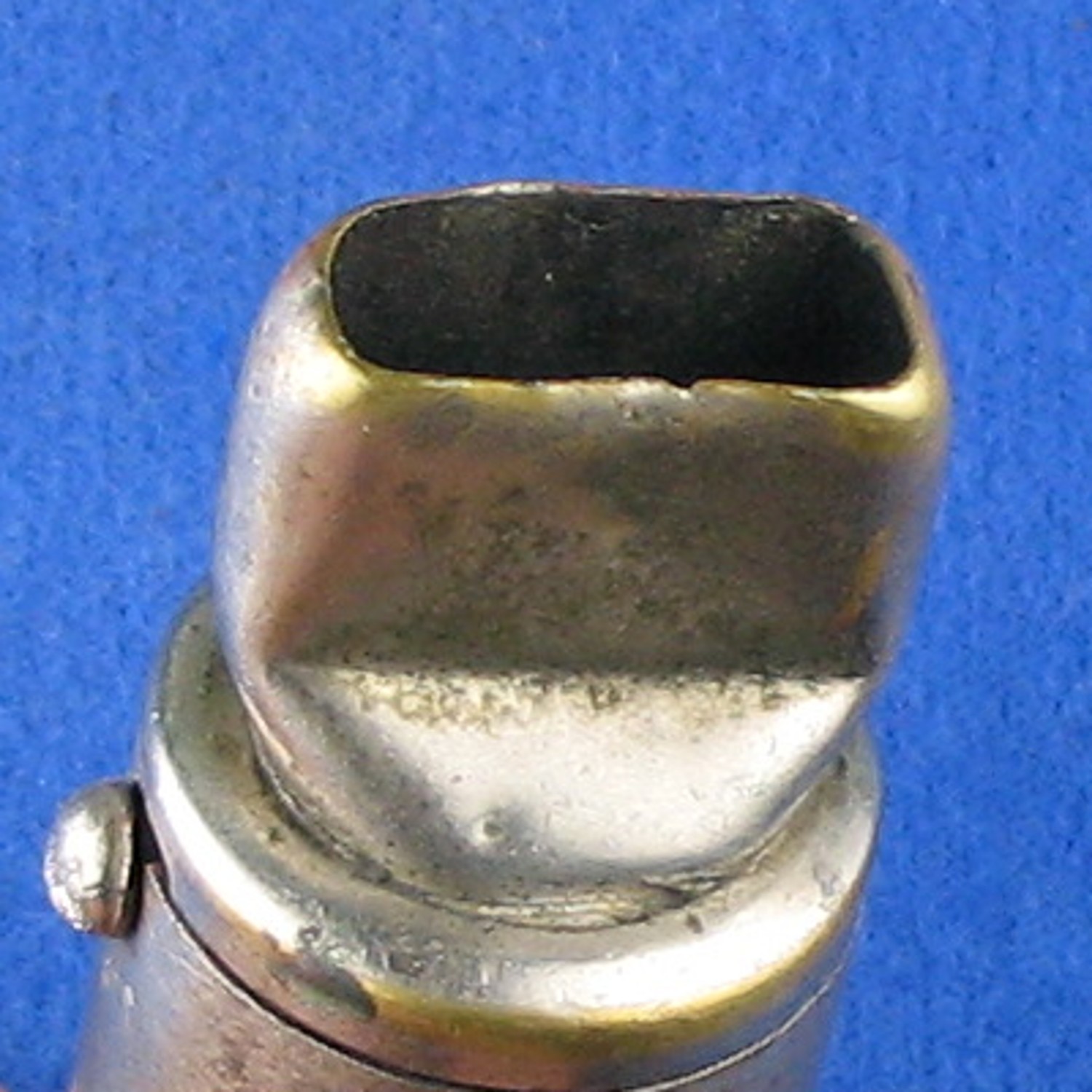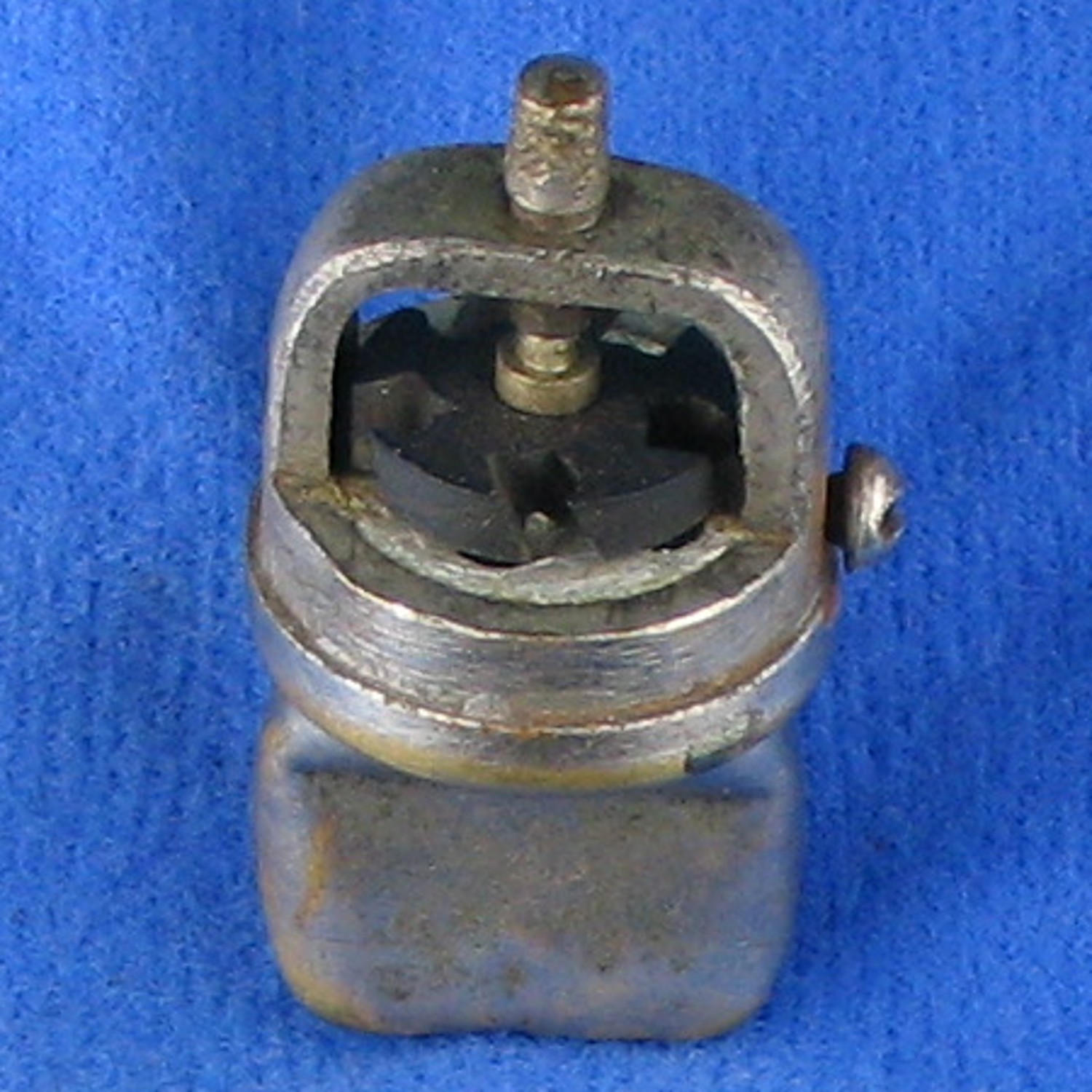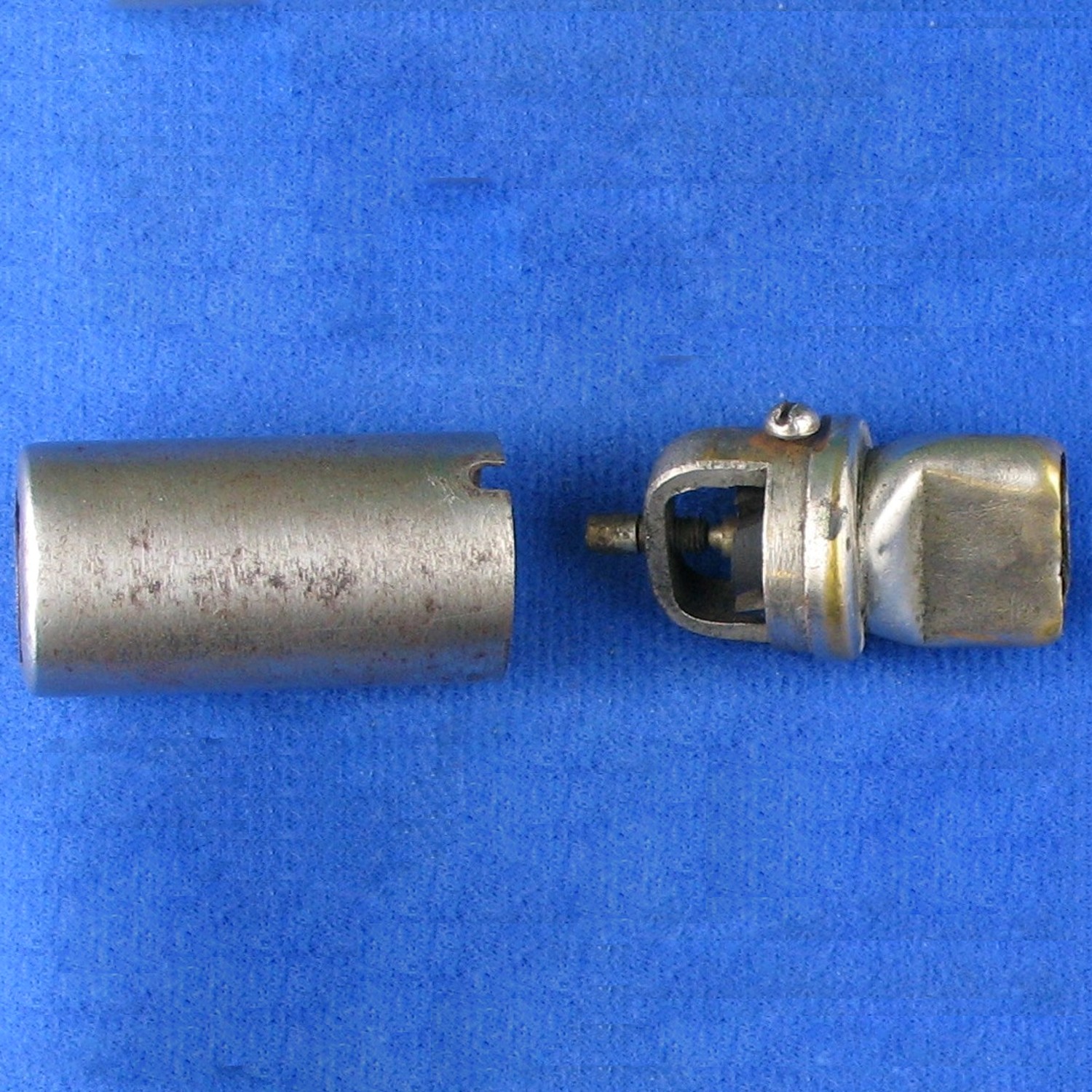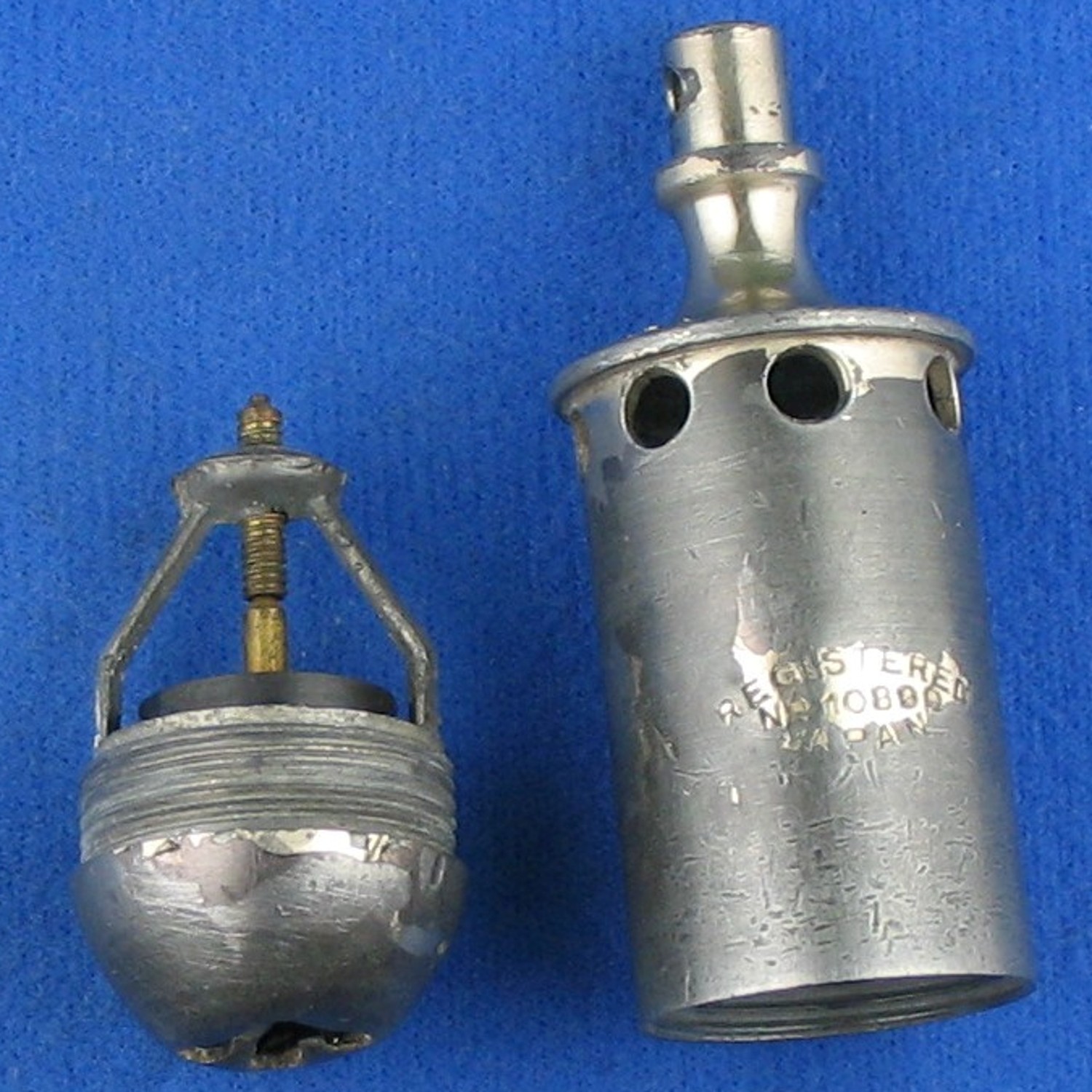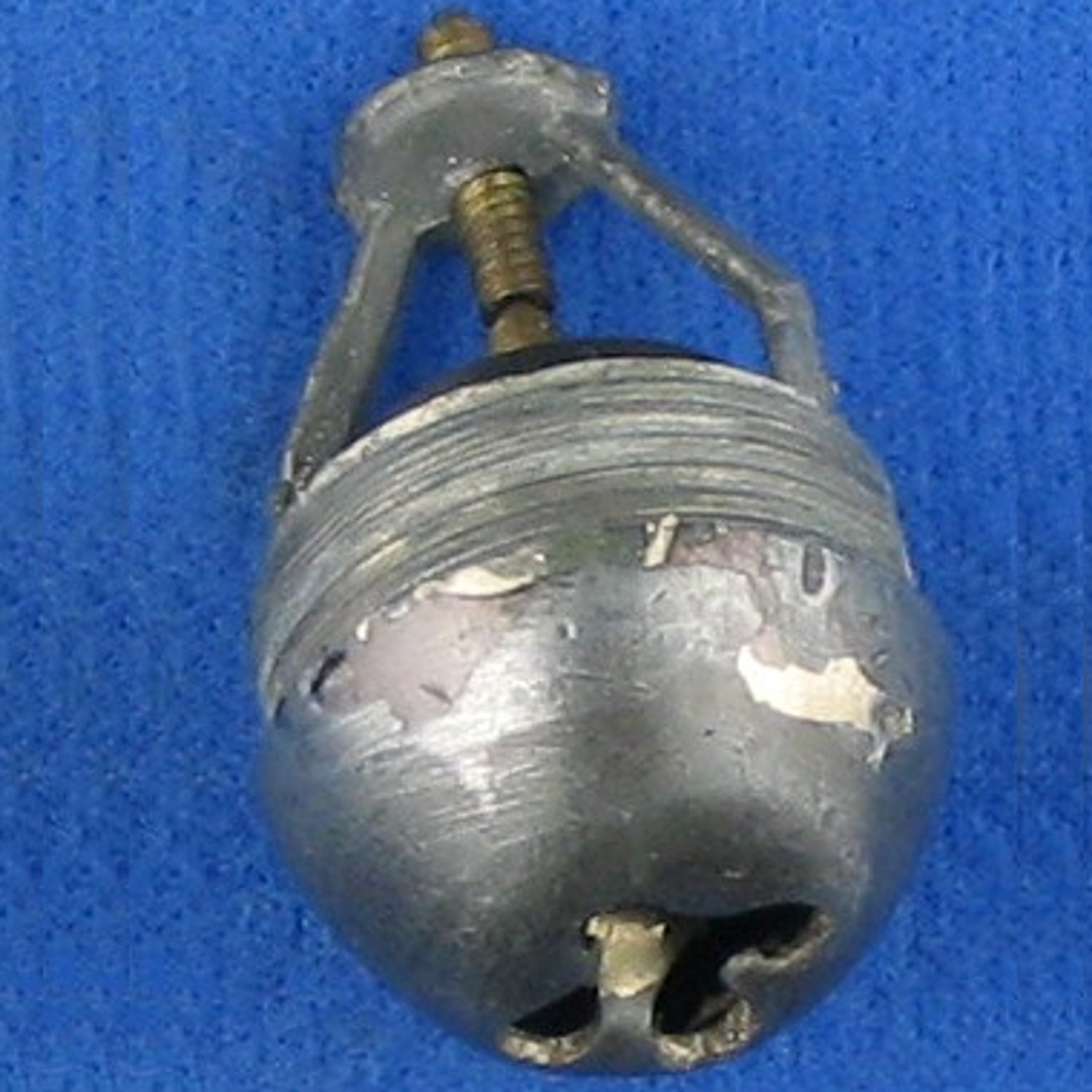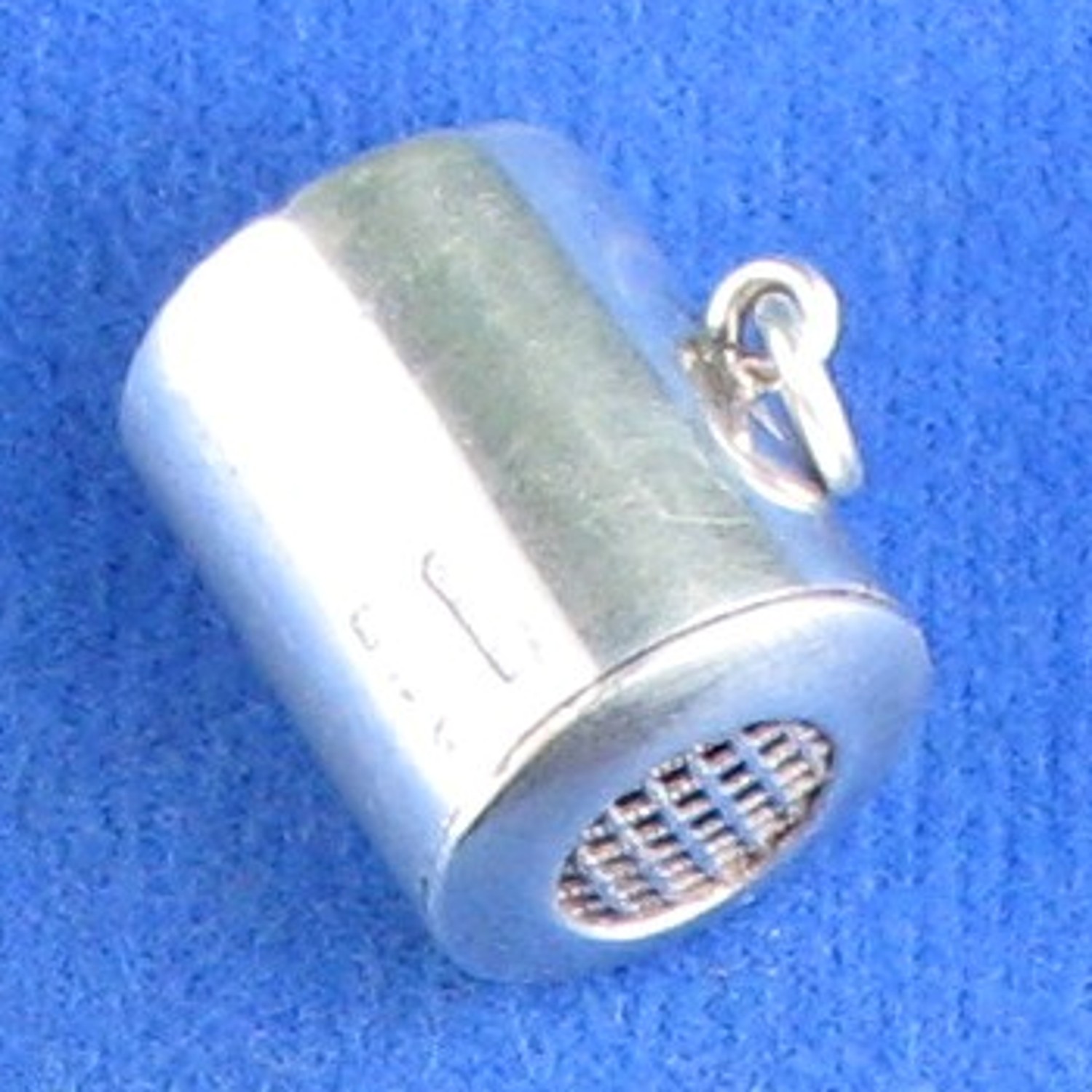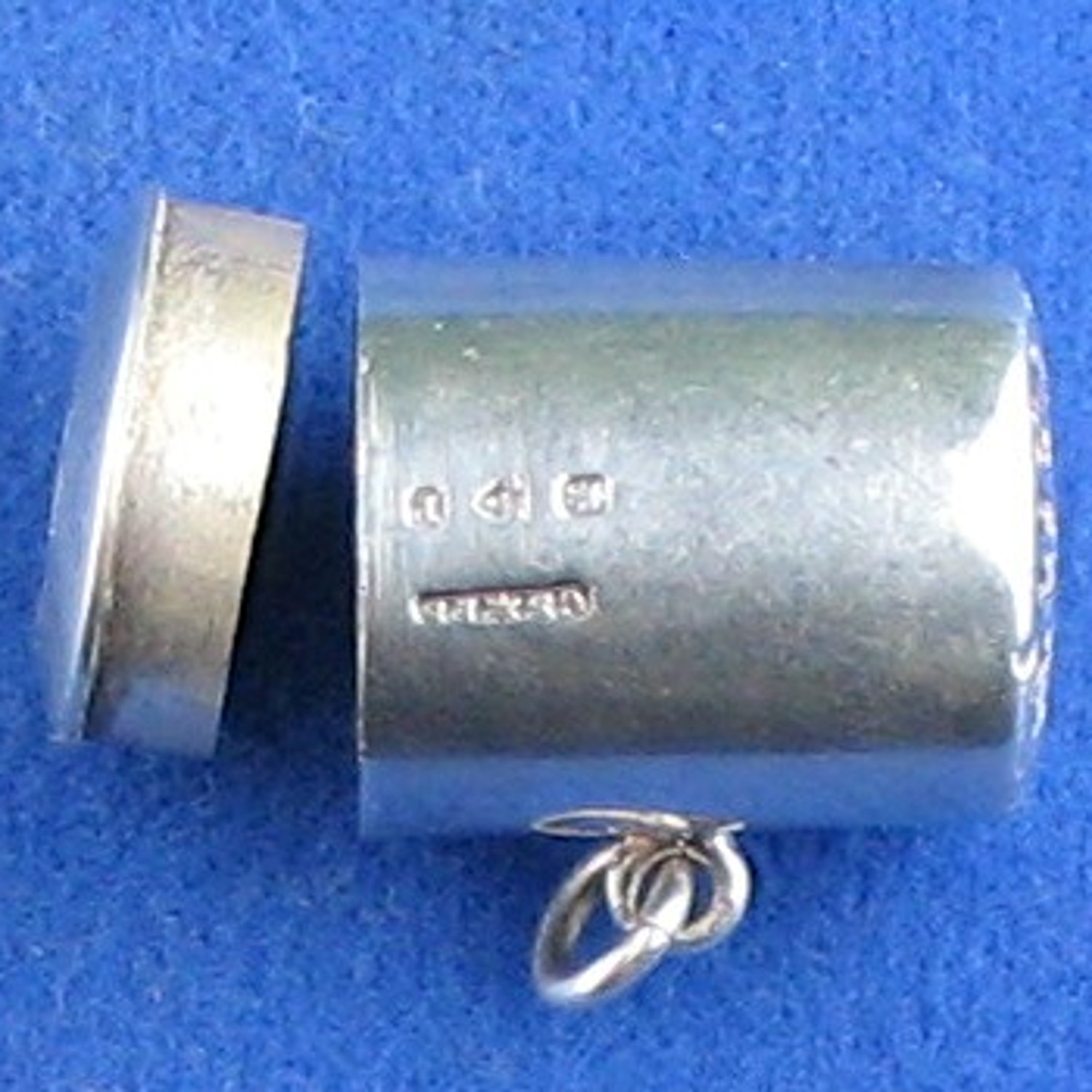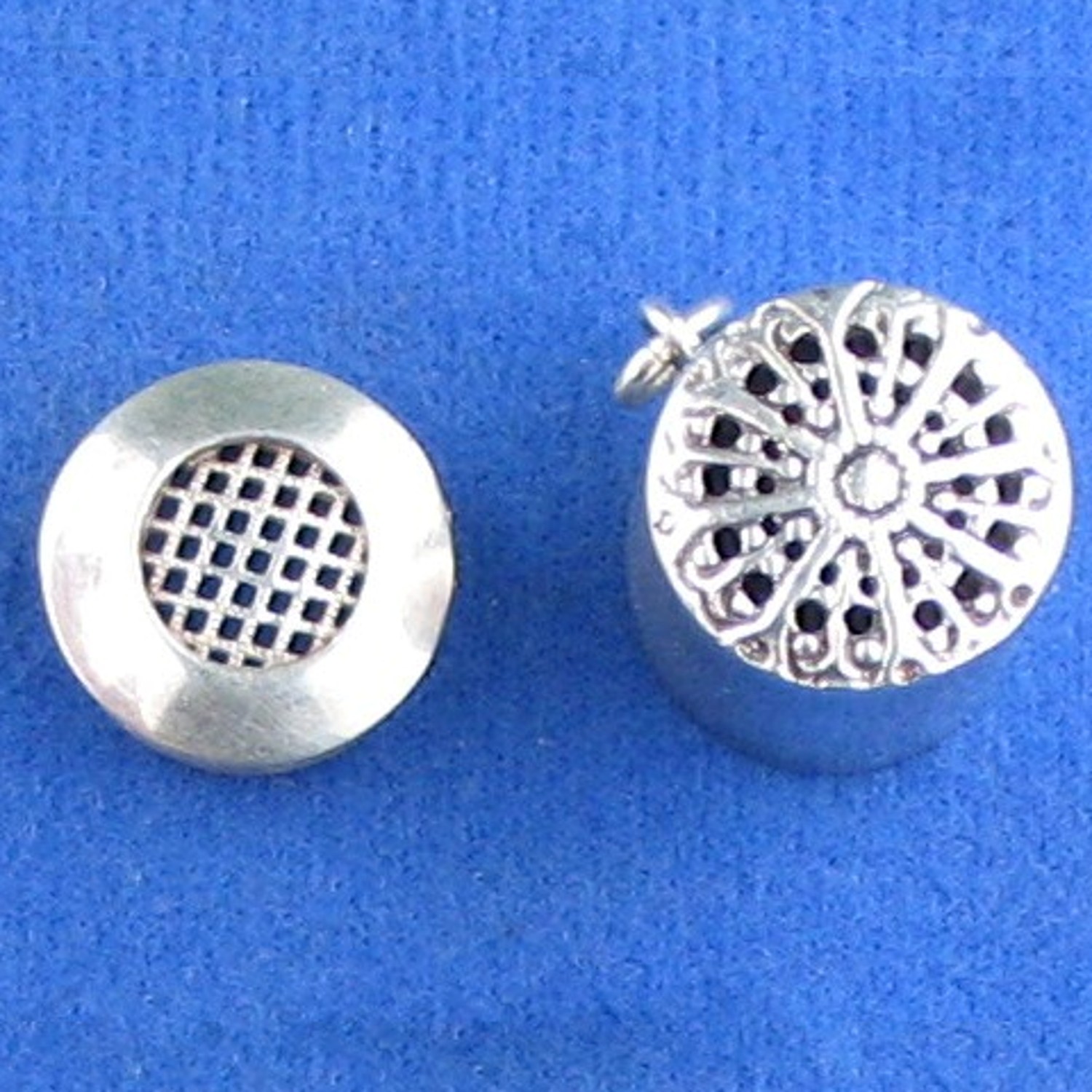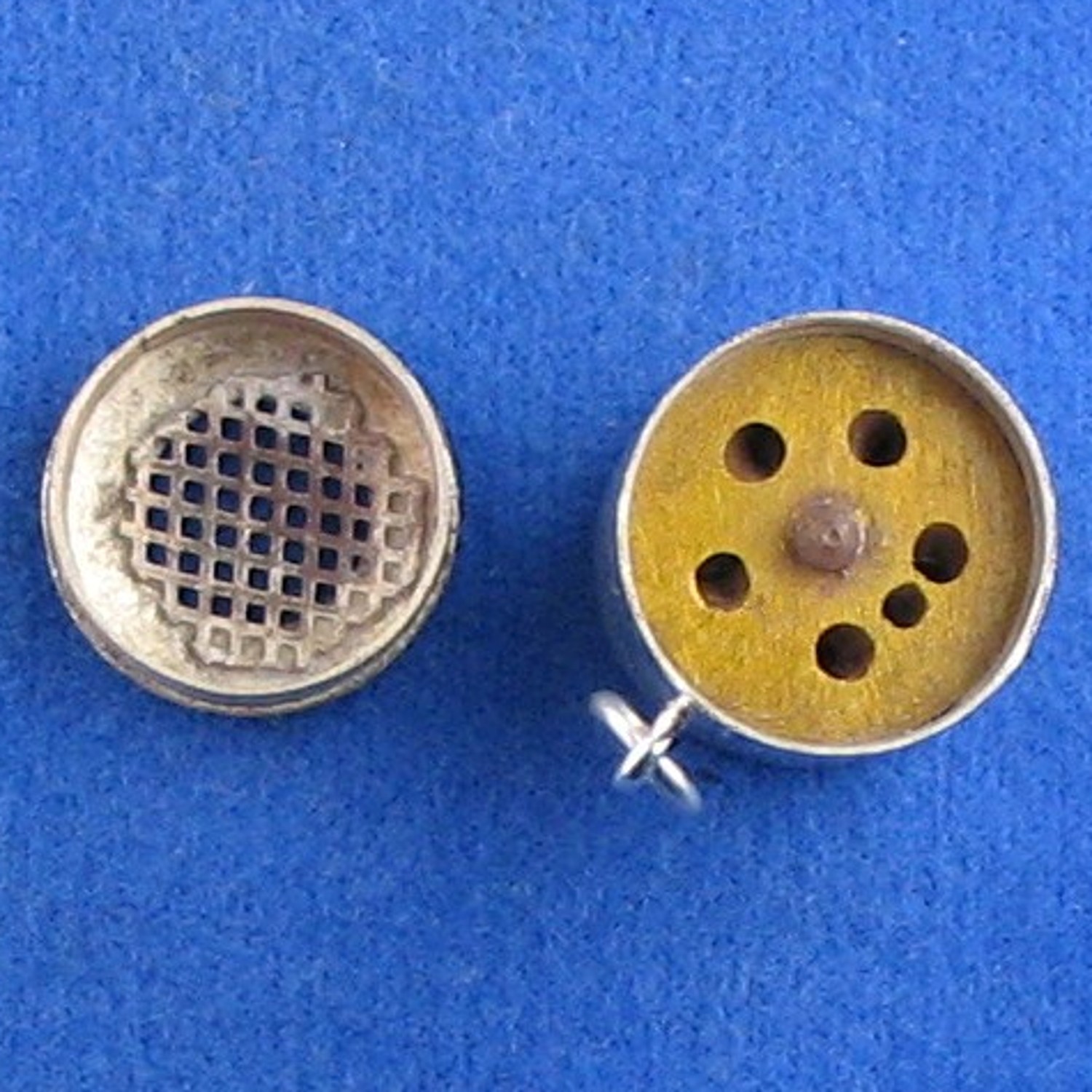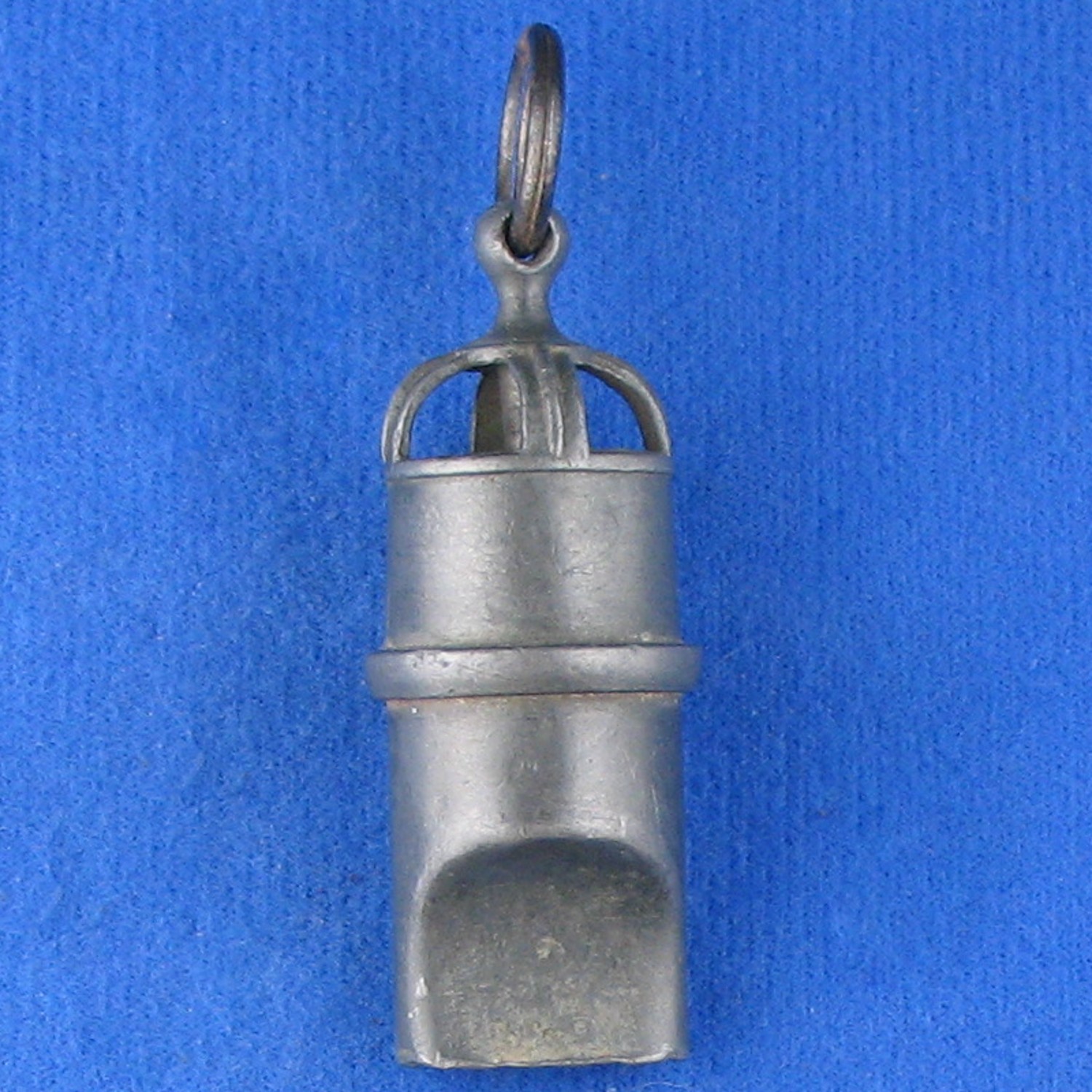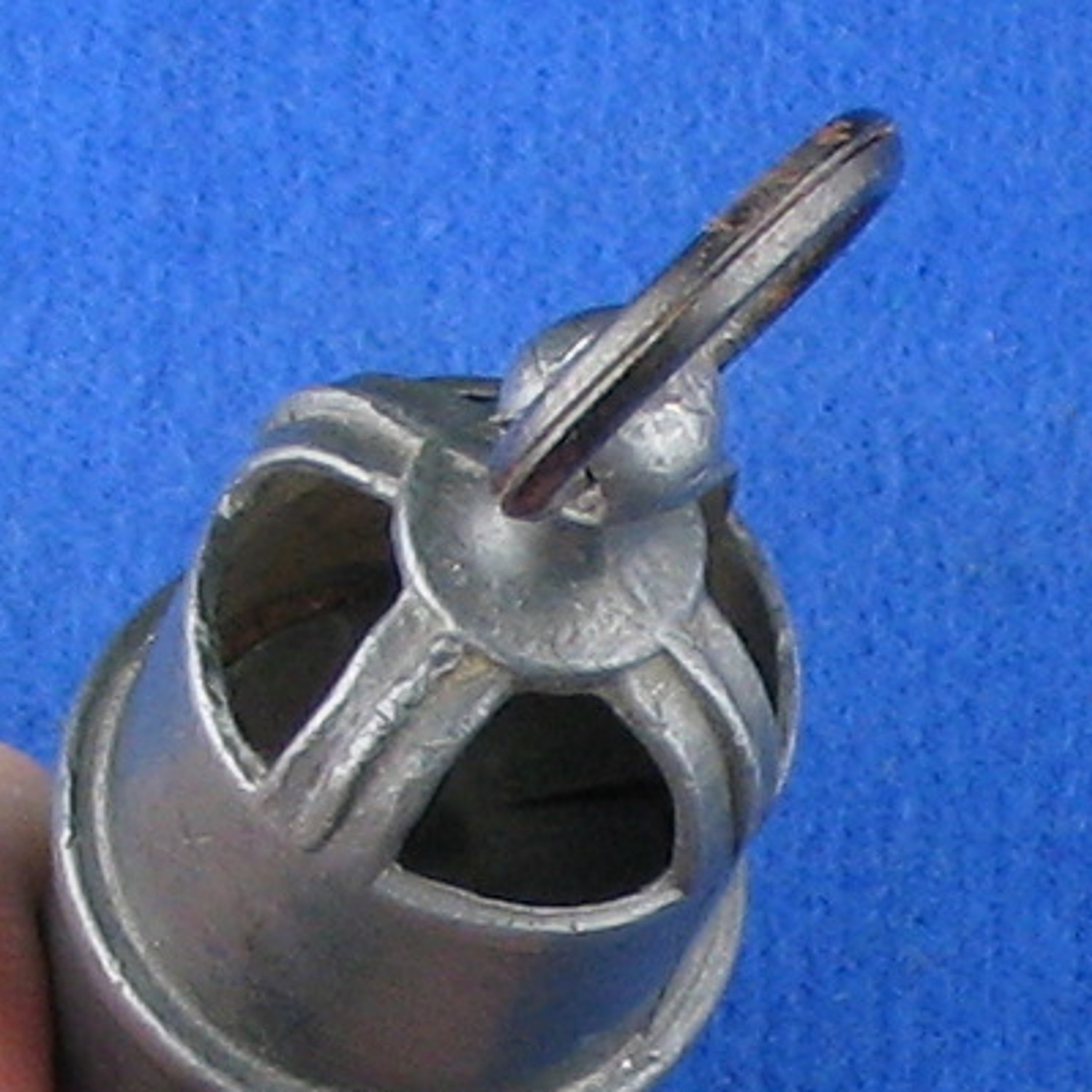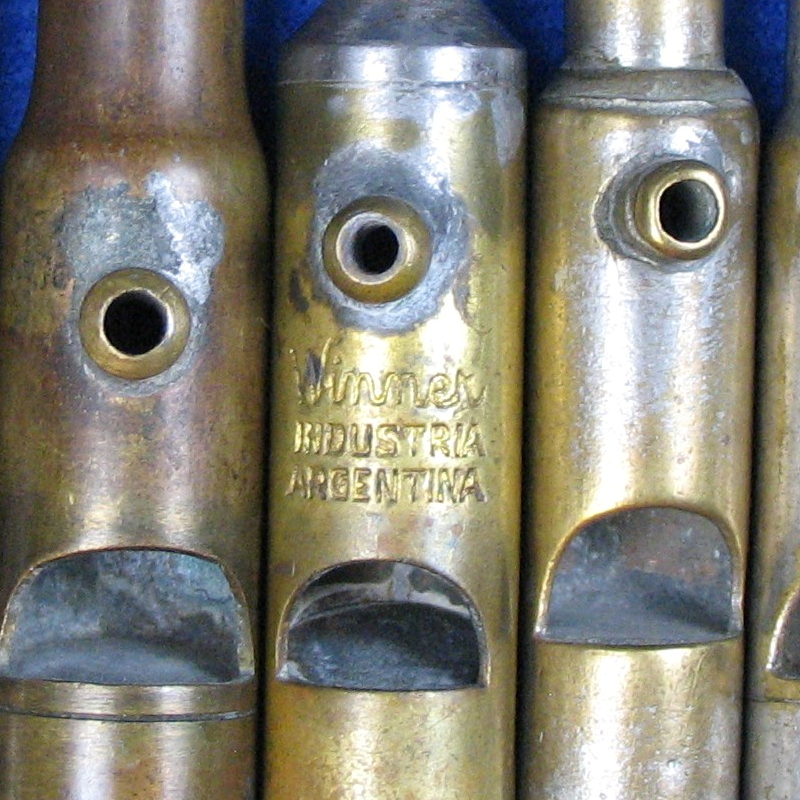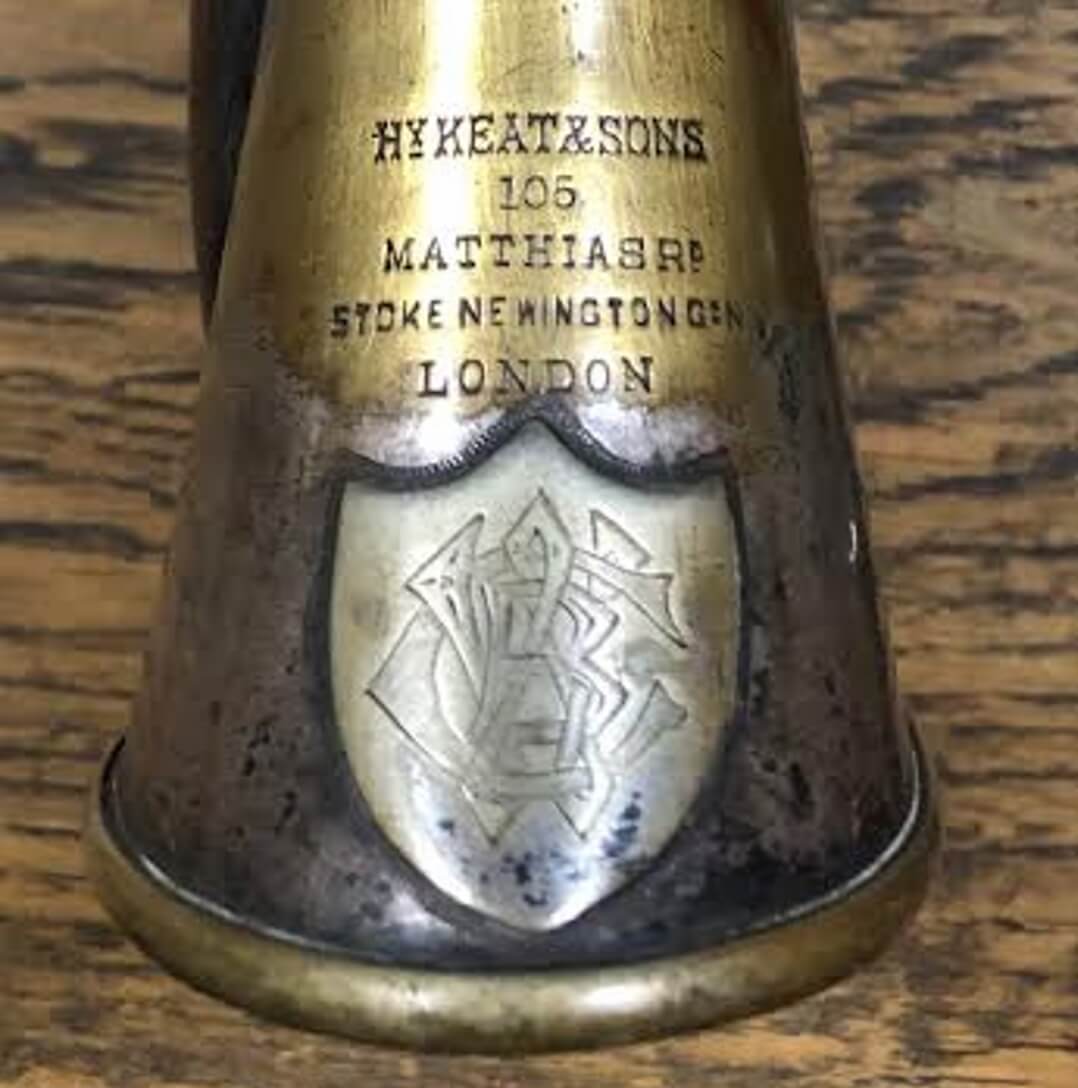Spotlight > Whistle Categories > Siren > 065
In looking back at SPOTLIGHT part one ( SPOTLIGHT 42 ) we see ‘cased sirens’ and we remember that sirens with spinning wheels were invented by De La Tour in 1819. Cased sirens along with Torpedo sirens ( both with spinning wheels ) and thin-shell tin sirens ( with spoked tin ‘wheels’ ) all three types dated to 1895. That leaves an interest arousing gap of 75 years from 1819, with very little known about the earliest hand held sirens.
This SPOTLIGHT will address only two of the variety of sirens just previous to that pivotal year ( 1895 ) and we will examine further, many that came later, focusing on a variety of models heretofore unrecorded as a group or series. Our endeavor is to begin categorizing for further research. Once again our efforts are confined to vintage metal sirens, more research will undoubtable will be done by others.
Our limited records here contain only two sirens ( 1881 – hallmarked , 1885– unmarked) known before 1895 and both were made by silversmiths. For reasons of copyright the pictures can’t be shown here. However in description, each one was small with filigree capsules. The inner parts are not known, or anything about accessing the insides to clean them. They were small and hung around a ladies neck. — Since writing we obtained one and it is at the end of the article.
That being said let us now address the other models held and recorded here in the reference collection recorded by TWG. Our research is limited to metal sirens. Listed below are examples known from ten years of research.
Consistent with TWG policy in our articles we do not pirate pictures, nor watermark as our own pictures that have been posted and owned by other people — taken from the internet ( unless specifically credited to pictures donated, they will not be posted ). The blue background will indicate that the sirens are in the ‘reference collection’ for further research. This somewhat minimizes what can be shown, but if you look further, surfing the internet can reveal multitudes of other examples.
For obvious reasons with the vast amount of siren designs, what we highlight will be narrow in scope, focusing on rarer ones.
Metals:
- Silver
- Brass
- Nickle plated brass
- Steel
- Pot metal
- Brittania/pewter
- tin
Shapes:
- Finger Rings
- Figurines/caricatures
- Tubes
- Trumpets
- Spherical
- Escargot
- Cane tops
- Canister
With the advent of the cased, torpedo and thin wall siren, many followed in brass, nickel plated brass, chromed over brass, silver, copper and brittania. Then again from medium size to large sizes there is some variety in models. However the overall shape remains the same. Torpedo sirens are more difficult to find and vary little in model.
However with the tin sirens ( 1895 ), steel and other cheaper materials incorporated into the pressed wheels seen in inexpensive thin wall sirens — we see an explosion of designs. There was a tremendous boom in all shapes and sizes, far too many to capture in this article.
We would like to show some differences in designs of rarer ones and then from there anyone can search the internet for a plethora of sirens from very small to quite large, from little baseball mitts, toys, tin lithos, to large trumpets and on and on. Then there is quite a variety of cast toy sirens. As we find additional rare sirens, we will add to the end of the article for further study.
To begin with we will use a group picture and work our way through it.
Several have arisen since this picture taken ( see THE bottom of THIS SPOTLIGHT ).
In retrospect the first row ( top to bottom ) visits again CASE sirens
Left row top to bottom. Top is a German cased siren, underneath is a pewter ( French ) case and bottom is a Hudson case.
Middle row top, is a spherical maidens alarm siren. Just under it is a Jennings USA, below it is a torpedo siren from Germany and at the bottom of the middle row is a Lilly type A siren.
Right, is a tin small USA siren, then a smaller model standard tin. Bottom is a rare USA siren with a set screw.
Martin Signal ( Germany ) case whistles are a higher quality siren compared to Hudson’s original patent. However that may be mere opinion, judge for yourselves.
Inside the mechanism is the same as Hudson’s. The vents and top are improved, if not just slightly more IN labor.
This unusual pewter cased siren was found in France. Note that it is five vents.
The mechanism is adhered to the mouthpiece.
The classic Hudson bottom of row one is presented in SPOTLIGHT number 42 and is compared to other case sirens.
Row 2 begins with the Maiden’s Alarm siren from eastern Europe, Cyrillic writing closely matches PATENT
( thanks John for translation help !! )
Plated brass gives it surprising sturdiness. It is a production siren and can be found periodically. It is rather large but very functional. You can see the mechanism for adjustment and the inside of the housing here.
Also note the stamp on the brass plate.
2nd just under is a siren stamped Jennings Co. S W trademark. Little has been found for this stamp out of the USA.
There is a simple wheel and the adjustment is on the outside.
Torpedo sirens next are of German design circa 1895. Few from different manufacturers have surfaced. This is one from France, manufactured in France Armes & Cycles Saint-Ettienne.
They came in several sizes, this being the largest at 70mm. All are vented and the holes vary in amount.
The Lilly sirens ( type A and type B – model # 41 ) throws light into another direction of design characteristics, casting and pressing both playing into production methods. Spotlight 63 & Spotlight 64
Even venting is worth recording and comparing — from 2 Lilly designs ( Model #41 ) — and on to the case sirens with 10 vents or 6 vents and the Torpedos round 6, and 7 vents. The opening of the tops on some allows cleaning, adjustments and free flow of air, but no difference in sound quality is heard. Note Lilly's
The Lil siren is just a bit late arriving on the thin wall siren scene, same year 1895.
The blowing end is very unusual; however the tear drop vents were used for many years in thin wall sirens.
Here are two sizes of thin walls patented 1895 in the USA – Mossberg designs
Vintage solid metal sirens circa 1900 from the USA have a very rustic look to them.They are innovative and do not follow a pattern of design as do the case, torpedo and thin walls (also from the USA)
Tracing out manufacturers is difficult and may take years. Toy manufacturers, small metal works companies, etc. may have had short lives with no records surviving. However once recorded, students of whistle research may be able to put together stamps such as this one on this USA made siren – W & A
There is a certain rustic quality about these sirens. However they all have to utilize a rotating wheel, the main differences being the design of the wheels, the design of the adjustments and housings. In May 2018 a Wurlitzer catalog page dated 1916 was sent in from Nick White identifying this Walberg & Auge siren stamp. — Established in 1903, Walberg and Auge started as a drum manufacturing company and a musical instrument repair shop in Worcester Massachusetts. Originally named Taylor & Auge, Bernard Eric "Barney" Walberg bought a half-interest in the company which until then was a sole proprietorship of A.L. Auge. After Walberg joined Auge on Oct. 3, 1903, they began the manufacture of drums and other musical instruments.( synopsis, wkikipedia )
An addition to the article is this cast siren of lesser quality. None-the-less an interesting model.
PICTURE PENDING
Concluding the group picture tour of variety in sirens we can now add more as we find ones for reference. In this tour has we are covering just a fraction of what might be mistakenly thought of as a limited field of study.
Countries of manufacture:
( Please send pictures and countries for reference. )
France
Germany
UK
USA
Japan
Argentina
China
Japanese Registered Design unknown maker, whether inside or outside adjustments are necessary, the understanding is that they all need periodic adjustments, cleaning and repair.
Unknown manufacturer.
A small silver 1898 ladies necklace siren. It works well for its size and is hallmarked with a brass interior. Could not get the mechanism out though.
Here is a solid connected Brittania from France. Circa 1920-30 Unknown maker, from France.
– TWG
Posted November 5, 2016
